

WINTER 2023 LIBRARY OF CONGRESS ISSN 2833-0455

48
90
The Power of the Dark Side
AI according to XI Jinping
Why the United States Must Win the AI Race
60
Radiography of Putin’s Years 6 TABLE OF CONTENTS

How China became Untouchable Goodbye OPEC Hello OSEC 67 Its More Than What Meets the Eye NEW WORLD, OLD WORLD, HYBRID WORLD UAE A Promising Global Investment Hub 6 128 148 152 173 189

Everything is changing, and the world we knew yesterday won’t be the world we know tomorrow. In order to survive, we need to see the World beyond our doorstep.
- Linda Restrepo -

It is hard these days to see anything but division, but some issues are still capable of bringing together unlikely allies.
5
One Example is:

OF
Drawing © Christian Pascal

The current residence of the French Ambassador in Moscow, called Igumnov House after a rich merchant in the 19th century and located on Bolshaya Yakimanka Street in one of the historic districts of the Russian capital, was for a time in the 1920s a forensic institute. It was there, in what is now an elegantly decorated small salon, that Lenin's brain was examined. It is likely that this autopsy did not provide all the explanations and secrets about the Bolshevik revolution. Similarly, to carry out a virtual X-ray of Vladimir Putin today will probably not provide definitive conclusions about the behavior and policies of the Russian president over the past twenty years.
A former President of the United States once said, after a first meeting with Vladimir Putin in 2001, that he had ‘got a sense of his soul’. For lack of a soul, let's make
a more modest effort to enlighten thoughts, behaviors and decisions. In any case, we must try to deepen the analysis off beaten track and received ideas about a power that is naturally not reduced to a single personality, is dependent on a history and is also a reflection of the state of a society.
Nostalgia for Power, a Soviet Legacy

Genes and education, nature and nurture, are always difficult to identify and separate, but let's look first at The Soviet legacy.

59


IGUMNOV HOUSE

IGUMNOV HOUSE 11
Vladimir Putin's statement that the disappearance of the Soviet Union was ‘the greatest catastrophe of the twentieth century’ is now well known, as are his words that ‘one would have to have no heart not to miss the USSR, but no head either to try to rebuild it’.

What were the characteristics of the transition from the USSR to post-Soviet Russia that could shed light on the situation we are now facing? The Soviet Union is now part of history, but that does not mean that it has disappeared irrevocably and that it has not left a lasting impression on people's minds, or that it no longer affects events currently taking place on the European continent.
The end of the Cold War was a failure of the Soviet Union. The Soviet Union was not overthrown by a people's revolution, but rather collapsed in on itself.
The result was great frustration, mainly because of the loss of power of a geographically considerable entity whose ideology had spread throughout the world. It should be noted that this disintegration was not experienced uniformly by all Soviets who had suffered from the dysfunction of the system and experienced deprivation, especially in the former republics of the USSR where distance from the center that was Moscow also marked the beginning of a liberation. For those who had felt euphoria and the expectation
of a capitalism that would solve all problems and bring prosperity, as if by a magic wand, disappointment was considerable and may have fueled strong criticism of the West afterwards.
The question of power has always remained essential since the moment, on the night of December 25-26, 1991, when the flag of the Soviet Union was flown over the Kremlin and replaced by the tricolor flag of the new Russia. The decomposition of the country's power had actually preceded this moment, and historical ruptures rarely take place in a single day.
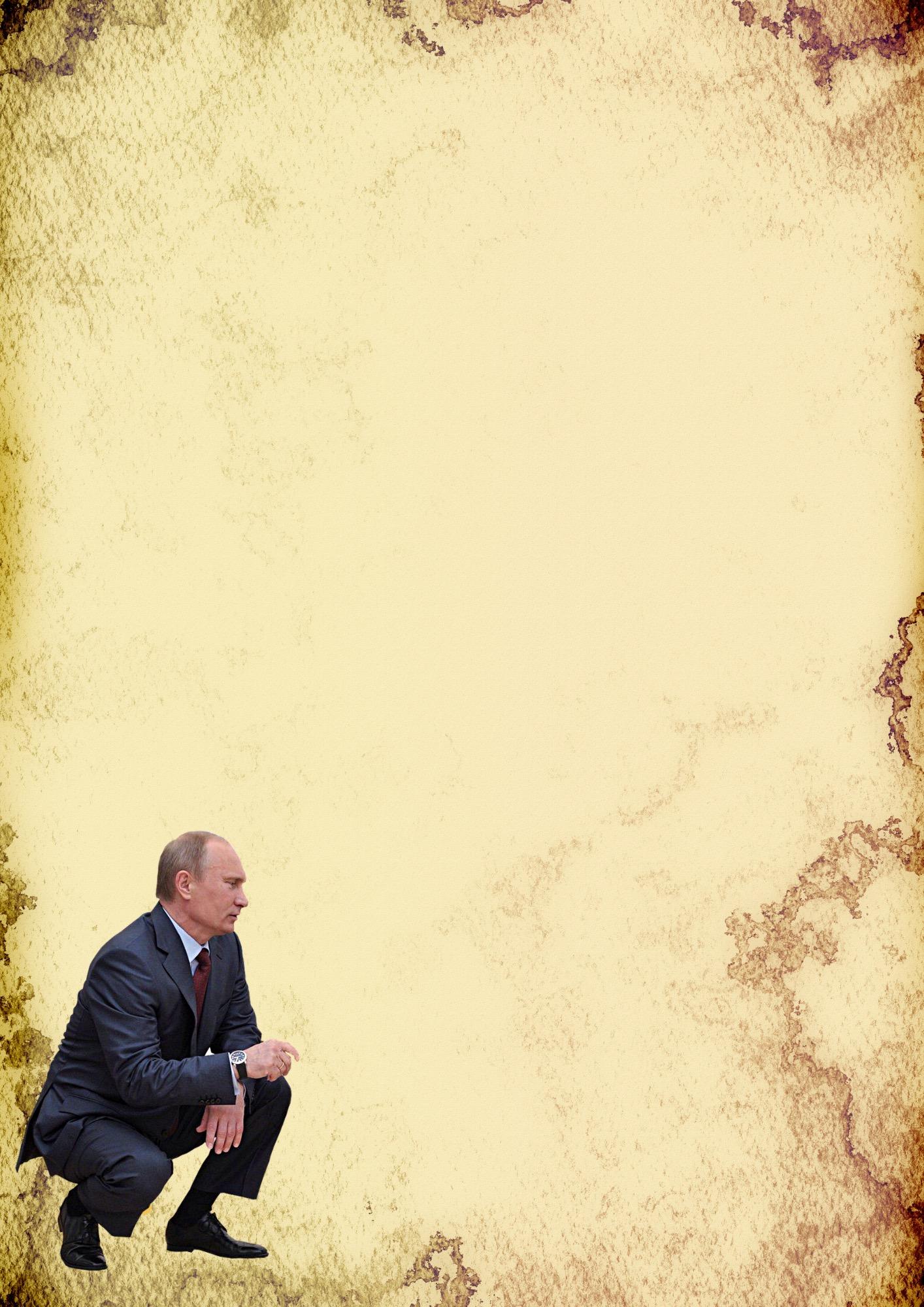
In the UN Security Council, during the last years of Mikhail Gorbachev, the USSR had become more conciliatory through weakness. It no longer systematically used its right of veto, in a concern for a privileged dialogue with the United States in order to limit the arms race, the economic and financial cost of which Moscow had become unable to bear. Mikhail Gorbachev was then designated as the scapegoat for a situation he had largely inherited, as if he had somehow ‘sold out the empire’. Vladimir Putin, for his part, has always kept his distance from the man who was accused in particular of weakness in the negotiations on the reunification of Germany, which the Russians still believe should have been achieved in exchange for the nonenlargement of NATO to the east, which was promised to the Soviet leader.
This alleged ‘promise’, which was never actually formalized but was limited to an oral statement at the time by Secretary of
13
State James Baker, has come up several times during the current Ukrainian crisis. In any case, it is clear that the weakening of Russia has fueled Putin's discourse on the ‘greatest catastrophe of the twentieth century’ in line with a whole section of public opinion.
Evgeny Primakov, former head of the KGB, who became Minister of Foreign Affairs and then ephemeral Prime Minister in 1998, contributed to reconstituting the State and to restoring a minimum of order in a country ‘on the verge of bankruptcy’, according to his own words in 1998, in only eight months and after years of wild privatizations initiated under Boris Yeltsin and appropriation of the national wealth by those who were called ‘oligarchs’.
Vladimir Putin, who has always had admiration for Primakov, to whom he entrusted later on missions
in the Middle East at the end of his career, is in a certain filiation with the latter. The Russian people, it must be admitted, were grateful to him for this policy of restoring order, which explains much of his longlasting popularity.
But Primakov quickly understood, unlike Putin, that Russia was no longer a superpower - except as regard its nuclear arsenalfrom the moment the Soviet Union had collapsed. This is perhaps the main source of Putin's error in the war in Ukraine, after years of obsessive reflection on the revenge he had to take on the West. For the war in Ukraine is a war against the West through Ukrainians.
The theory of ‘humiliation’ of Russia, which has sometimes been used in recent months, is in fact only a camouflage or a justification of this spirit and this project of revenge.

If some blunders have been committed against Russia since 1991, there has never been a systematic policy aimed at humiliation. For example, George Bush Sr. was very concerned to spare the dying USSR, which had nuclear weapons and was threatened with collapse.
The international financial institutions, whether the International Monetary Fund (IMF) or the European Bank for Reconstruction and Development (EBRD) provided significant aid to the new Russia, a NATORussia Council was set up, etc. This list is not exhaustive, which invalidates the thesis that Moscow was ostracized.
transition under Gorbachev and even Yeltsin, as well as to the inability of the Russian leaders to understand the modern world and to adapt to an open economy from a closed command economy, as if encased in an iron corset.

This was evident in Russia's handling of the international economic and financial crisis of 2008, which we shall return to later. If one wanted to summarize and schematize, at the risk of caricaturing, one could say that the transition from the USS took place, in a schizophrenic manner, against a backdrop of expectation and fascination of the Russian people for the West, accompanied by a repulsion as to the consequences of unprecedented and considerable changes.
The subject would deserve considerable development, which some historians have already done, to emphasize that a ‘Soviet legacy’ is also due to the failure of the democratic
Confinement and obsidian complex
The Soviet Union was a world apart and even claimed to be. This is still the case for Russia.
15

The paradox is that the country, which lost 5 million km2 after 1991, remains the largest in the world by size, in an extension from Europe to the Pacific and from the northern seas frozen in winter to the warm seas, object of all dreams and covetousness. Today, it is a question of controlling the entire Sea of Azov, the gateway to the Black Sea and beyond to the Mediterranean. For all that, Russia feels permanently threatened, or so it claims. But isn't this the result of its constant will to expand, characteristic of its entire history, starting with the Great Principality of Muscovy in the 15th century? In any case, this is one of the manifestations of its obsidian complex.

It is always striking to feel when you are in Moscow, that is to say 3 or 4 hours by plane from the main European capitals, a mental distance more than
proportional to the geographical distance alone. For Vladimir Putin, this feeling of strangeness bordering on a form of claustration, comes from far away. It is certainly partly linked to the history of his parents in the terrible siege of Leningrad during the Second World War. The Russian head of state, however stingy with confidences, told himself to Hillary Clinton - who made it public in her book Hard Choices - the story of his father who came back from the front to save his wife in extremis from a mass burial with other victims of deprivation or typhus. While it is not a matter of superficial psychological analysis, it is generally accepted that the violence suffered is often reproduced. Therefore, do not the siege of Mariupol and the battle around the Soviet-looking factory in Avoszstal as well as the relentlessness of
17
Bakhmut in the Donbass - whose military or strategic significance is not always understood - have distant reminiscences with Leningrad or the battle of Stalingrad?
Celebration of May 9, ‘Victory Day’ in 1945, while totally justified, is also a way of maintaining a cult of defense of the besieged and invaded homeland. In this regard, Vladimir Putin is to be credited with having organized a parade of the ‘Battalion of Immortals’ on this date for several years.
He himself took the lead and allowed citizens, in an expression of a more individual character than the demonstrations in Red Square, to march with the portrait of their ancestors sacrificed in battle. The Russian President carried the portrait of his father, a tutelary figure who never leaves his side and is always in evidence in his office, wherever he is.

The Kremlin, or rather the Kremlins should be said, because there are several Kremlins in several Russian cities - such as Suzdal, Novgorod, Rostov the Great, Pskov, Nizhny Novgorod or Astrakhan - is built on a mound and reflects the essence of a dominating power, but distant from invaders as well as the people.
In the maze of endless corridors, in the offices and ceremonial rooms, not a single sound of the city, i.e. of life, is perceptible. Offices of some officials - for example, the office of Alexander Rutskoi, a former fighter pilot and hero in Afghanistan who became Boris Yeltsin's vice-president - are arranged lengthwise along an endless map of the Soviet Union, which can be up to ten meters long.
This attests to the will to dominate a world that is not otherwise seen or heard. During the first years of postSoviet Russia, Lenin's office was kept in the Kremlin in its original state - as well as that of his wife Nadezhda Krupskaya in a ministry where she had been deputy minister of culture - like a chapel in the Vatican where people would come to worship. What was also striking was the presence on the walls of Lenin's office of geographical maps revealing conquests and territorial projects.
If one must always make part of innate, of education and also of function, Vladimir Putin has for a long time expressed by his behavior a form of autism. If, after two presidential terms, he was no longer the man from St. Petersburg, whose elongated and hollowed out face reminded us - without misplaced zoomorphism -

more than a wolf, because Putin does not hunt in a pack, of a fox that is as much stalked as it is in search of prey, Vladimir Putin still seemed uncomfortable, even to the point of an almost sickly shyness of his behavior.
Even the endless annual press conferences did not really bring him closer to his fellow citizens and Vladimir Putin was rarely seen talking to the man in the street. Efforts made in recent weeks of the war in Ukraine, no doubt in response to the communication of the Ukrainian president, have not been more natural and convincing. A practice remains that of the ‘Potemkin village’ with its artificial decorations and sometimes its extras.
Years spent in Dresden, East Germany, before the fall of the Berlin Wall, did not necessarily give Vladimir Putin an opening to the world.
19

The modest KGB agent - who was appointed head of the FSB in 1998, a few months before becoming Prime Minister - was in fact doubly confined, firstly in a provincial town closer to the East than to the West and secondly within a Soviet community generally considered by the local population - with which it would not mix - as an occupying force. In fact, Soviet forces in this part of Germany reached up to 500,000 men, giving it the highest military ‘density’ in the world, given the relatively small size of the GDR. However, these forces were not very visible and were generally confined to garrisons or even forests defined as ‘no-go areas’ (Sperrgebiete).
It does not seem that Vladimir Putin came back

21
enchanted from such an experience, except that he brought back a very decent practice of the German language, sometimes mistaken for a German ‘tropism’. This was undoubtedly useful in his dealings with Chancellor Merkel, and even with other representatives of the German political class. If it is not a question of evoking Chancellor Schröder, whose closeness to Putin's Russia is well known. It is to the only Foreign Minister Steinmeier, today President of the Federal Republic, received in his presidential residence of Novo Ogarevo, that he confided reportedly several months before the 2008 deadline, that he would not run for a third consecutive presidential term, which the Constitution did not allow him to do, and that he had chosen Dmitri Medvedev to replace him for a single term.
Was this an expression of Russia's unparalleled closeness to Germany in Western Europe or a message to reassure German industry?
Distance from reality is also distance from economic policy. Vladimir Putin has often displayed an impressive knowledge of the issues, thus forging the image of a competent technocrat.
It was not very difficult for him to distance himself from the image of his capricious predecessor Boris Yeltsin. But mastery of files does not necessarily translate into an understanding of mechanisms, especially those of a modern economy. ‘Diversification’ of the economy was the leitmotif of Dmitry Medvedev’s presidency (2008-2012), while Prime Minister Putin insisted in his inaugural speech on May 8, 2008 on the ‘modernization »’ of economy

and integration of Russia into the world economy.
The global financial crisis, which began to affect Russia in the fall of 2008, has dashed any hopes of transformation. The persistent mental sclerosis inherited from a closed, command economy conception did not facilitate the understanding of contemporary economic mechanisms during a particularly troubled period on the global level either.
During the first months of the crisis, oil’s price dropped from $147 per barrel to $30 between July and September 2008, while the level for maintaining a balanced budget was $60. There was a lively debate within the government, particularly between Finance Minister Alexei Kudrin and Economy Minister German Gref, about the best allocation of oil revenues.
These revenues fed a Stabilization Fund above $27 a barrel, which had by then reached several hundred billion dollars (NB: $600 billion at its peak, including about half of the Central Bank's reserves). The Minister of Finance, in a spirit of perfect financial rigorism, argued for the freezing of the Fund on the grounds that it had been created precisely to deal with sudden fluctuations in energy prices that Russia had already experienced so cruelly. German Gref, on the other hand, believed that the considerable amounts saved should be used for investments which, even in times of low economic growth, would guarantee future development.
The Kudrin line won out in the end, and we do not remember Prime Minister Putin taking a clear line in this debate.

23
Kudrin thought he had triumphed when the storm hit, even though the weaknesses noted before the crisis (excessive dependence on raw materials, particularly energy, around 80%; dilapidated infrastructure; insufficient supply and double-digit inflation; regional imbalances) were still there.
Fall in energy prices had caused a marked deterioration in the terms of trade that should have led to a formal devaluation. The executive power refused to do so for political and social reasons, in a country still affected by the 1998 syndrome, a sort of ‘financial Chernobyl’ (NB: the value of the rouble fell by 70% in a few days), substituting a policy of adjustments sometimes described as ‘wrong steps in the right direction’. The Central Bank intervened to the tune of $200 billion between November 2008 and
February 2009 to halt the loss of value of the rouble. This did not prevent a de facto devaluation of about 30 per cent over the period.
Russia did not take advantage of this period to invest in its infrastructure and modernize. The diversification of the economy, despite the wishes of President Medvedev, was not seriously undertaken. There is undoubtedly a certain mental backwardness of state officials, often trained and even in charge during the Soviet period.
Autocratic tradition and endemic violence of power
The ‘vertical power’ of Putin’s years was in line with the governance during the Soviet era and the tsarist autocracy. The latter, beyond institutions and governance, is a deep part of Russian culture. Even the liturgy of the Orthodox religion, despite the soothing holy images of Our Lady of Kazan or Vladimir, is mainly male and women are veiled in churches especially during the major religious

holidays, the most important of which is Easter. The image of Christ Pantocrator reproduced under the domes of churches and monasteries projects an image of power and domination over the believers. It is therefore not surprising that Stalin, especially in order to mobilize masses during the Second World War, went closer to the hierarchy of the Russian Orthodox Church. We can think that Putin, whatever the depth of his beliefs, made the same calculation, especially in a country that has lost its bearings since the official disappearance of communism. Vladimir Putin cultivated the image of the implacable supreme leader very early on. It is even on this project that he made himself known and elected the first time to the presidency against the backdrop of a country in the grip of separatist and Islamist forces in Chechnya. From the tragedy of the Kursk submarine at the beginning of his first term, for which his
management was criticized in particular in the powerful media (see ORT channel of the oligarch Boris Berezovsky) until then in his devotion, Vladimir Putin made an ostentatious change. Thus, he displayed himself alternately in the garb of a generalissimo, an airplane pilot or a sailor in a mimicry reminiscent of the fighter Stalin rather than the ideologue Lenin.

Verticality of power, necessary to restore the state and meet expectations of the people after the chaos of the Yeltsin years, could not accommodate a ‘horizontal’ society, i.e. the sharing of power with the powerful people as in feudalism. Post-Soviet Russia was built on a kind of Dr. Faust-like pact between state power and new prominent figures of the economy - often coming from old power structures (Siloviki) - who were called ‘oligarchs’.
It was they who, by appropriating last remnants of the national wealth, allowed Boris Yeltsin, thanks to their money and influence, to be re-elected in 1996.
25
Tatiana, Boris Yeltsin's daughter, was in charge of coordinating the process. It was also she who suggested to her father to call an unknown person, recently appointed head of the internal security (FSB) to become head of government and the future president who would guarantee the interests of the family of the resigning president. However, Putin could not accept this competing power, believing in his inexperience and docility. A conflict was therefore brewing in the tradition of the ancient historical opposition between the tsar and the boyars. The oligarch Mikhail Khodorkovsky, who had political aspirations, and his oil company Yukos, which was quickly dismembered, were the first victims of atonement because it was a question of making an example. Khodorkovsky's sentence to 9 years in prison for tax evasion was completed and announced, while the oligarch was already in prison, during a breakfast in the Kremlin to which Vladimir Putin had summoned the country's main oligarchs.
The message was clear and Putin has been in the habit, since 2000, of publicly chastising the boyars in front of the cameras. Vladimir Putin is reputed to be one of the richest men in the world. However, his fortune must be compared with that of his competitors in the economic sphere, whose wealth could prove threatening when one considers that annual capital flight has often been estimated for a hundred billion dollars a year. In other words, money has become in Russia as much a weapon of destabilization of power as a means of defense, even of survival. In this respect, one of the consequences of the war in Ukraine may have been reduction in the power of oligarchs. Vladimir Putin has asked them to finance his war, assets have been seized or have had to be repatriated, not to mention a cascade of brutal disappearances that have not yet been elucidated.

Extreme violence within Russian society, as a fairly ordinary way of exercising power, is almost unparalleled in the developed societies of the northern hemisphere. Tragic events have occurred during the Putin years, but they cannot be all attributed with certainty to him. The long list began with the 1999 attacks on apartment buildings in Moscow, which killed hundreds of people, allowed Vladimir Putin, who was aspiring to the presidency, to establish himself as the country's new strongman, and led to a fierce crackdown on the second Chechen war, already known as a ‘special operation’.
Other ‘cases’ have marked the minds of Litvinenko poisoned with polonium in London in 2006 and Skripal with a chemical agent in the United Kingdom, journalist Anna Polikovtskaya, killed on
October 7, Putin's birthday but whose execution points rather to Kadyrov, ‘suicide’ in 2013 of Boris Berezovski, still in Londongrad, or the opponent Boris Nemtsov, shot in the back in May 2015 a few hundred meters from the Kremlin on the bridge leading to St. Basil's Cathedral.
Many question marks remain over these cases, may we believe, according to a former head of the Russian President's communication, that the latter was actually ‘a weak man who wanted to appear strong’?
If this is the case, the strategy of terror pursued in Ukraine - up to the use of Kadyrov and Prigozhin's Wagner Legionunfortunately has a certain logic, and this could also explain the recurrent reference, veiled or indirect, on the Russian side, to the possible use of unconventional weapons in the ongoing war.

27

Putin's Weltanschauung
What is the world view (Weltanschauung) of Vladimir Putin? There was a speech on security matters in 2007 at the Wehrkunde in Munich and since September 30, 2022 in the Kremlin when the annexation of four Ukrainian territorial entities was proclaimed. In the Munich speech, Putin addressed the West to talk about Russia; in the Kremlin speech, he addressed Russia to denounce the West.
Inspiration for both speeches was comparable and there is no real difference between them, except in degree and style. The common orientation of the speeches is clearly anti-Western: denunciation of a unipolar world dominated by the United States in 2007 was followed fifteen years later by a full-blown indictment of the entire Western world and the assertion of specifically Russian ‘values’.

The speech at the Munich Wehrkunde was structured and diplomatic; the one in the Kremlin is more incantatory and disheveled and expresses a rupture in the form of a real indictment.
In Munich, attempts to establish a unipolar world after the end of the Cold War were denounced and the United States was named, but at the same time use of force and violations of international law were rejected; a commitment to the multilateral system of the United Nations, which alone would retain the use of force, was emphasized; a space for cooperation with Washington was preserved, in particular for further reduction of nuclear arsenals, nonproliferation and nonmilitarization of outer space.
The Kremlin's speech was above all a plea for the legitimacy of the annexations, an indictment of the colonizing and dominating
29
West and a vigorous indictment of the degeneracy of a rogue West.
The Russian obsidional complex took its full measure there (see ‘hatred against Russia...Barbarians are those who do not comply...hunger, discord and poverty imposed on Russia after the collapse of the USSR…'). Under a classic and renewed leitmotiv of ‘(unkept) promise not to enlarge NATO to the East’, inversion of guilt and distancing from any responsibility is total: it is NATO that violated principles of inviolability of borders; the Blitzkrieg was the work of the West against Russia; a hybrid war was waged against it; the borders of the Soviet republics were ‘cut up in the corridors (of offices)’. This language was uncompromising, even violent and threatening, as was the speech in the Luzhniki stadium, on March 18, 2022, in front of 80,000 people: a catalog of Western turpitudes was endless (see treatment of the ‘Indian
tribes’ of America, colonial policy of France and England, opium war against China, Korea, Vietnam, napalm and chemical weapons, ruins of Dresden, Hamburg and Cologne, telephone tapping of world leaders); veiled threats to use nuclear weapons was once again raised (see ‘the United States used it twice, in Hiroshima and Nagasaki, it is a precedent’); evolution of Western societies is globally judged ‘satanic’. In addition to this catalog of unforgivable grievances, the Russian president echoed the theme, which was more or less in the background in Munich, of ‘a new world order, just and democratic’. Russia, with its thousand-year-old history, is a ‘country at the head of the anti-colonialist movement',

in favor of ‘new alliances’. If, according to Vladimir Putin, it is necessary to engage in a ‘battle for the great historical Russia’, its language, its culture and its values, what is striking in the presentation of this Weltanschauung, is the absence of real introspection, and of reflection on Russia itself and its evolution, except for a few clichés stated in conclusion. At most, we learn, at the beginning of the speech, that ‘past cannot come back, and that is not part of our aspirations’. Indeed, the Soviet Union is dead, including its positive aspects, because there were some for the people, for example in the field of education and culture. But what has become of Russia? What is its history in the collective memory?
In reality, isn't Russian culture above all linked to the soil, to the land, rather than to a transmission through memory?

‘Russian memory, Russian oblivion’, wrote a great historian. Denying Russian history, fantasizing about it or tinting it with ideology has prevented the Russian people from rebuilding themselves, even though they were losing their bearings at the time and undoubtedly had a deep desire to do so. The democratic ferment of the Gorbachev period and even of the first years of the ‘transition’ under Boris Yeltsin demonstrated this. In his Kremlin speech, the Russian president, contrary to the Hegelian principle that ‘one poses as an opponent’, asserts exclusively a rejection.
But he does not clearly define what Russia is. Does he know it himself, i.e. does he have a real historical knowledge of it beyond his personal background? He had said that disappearance of the Soviet Union was ‘the greatest catastrophe of the 20th century’.
31
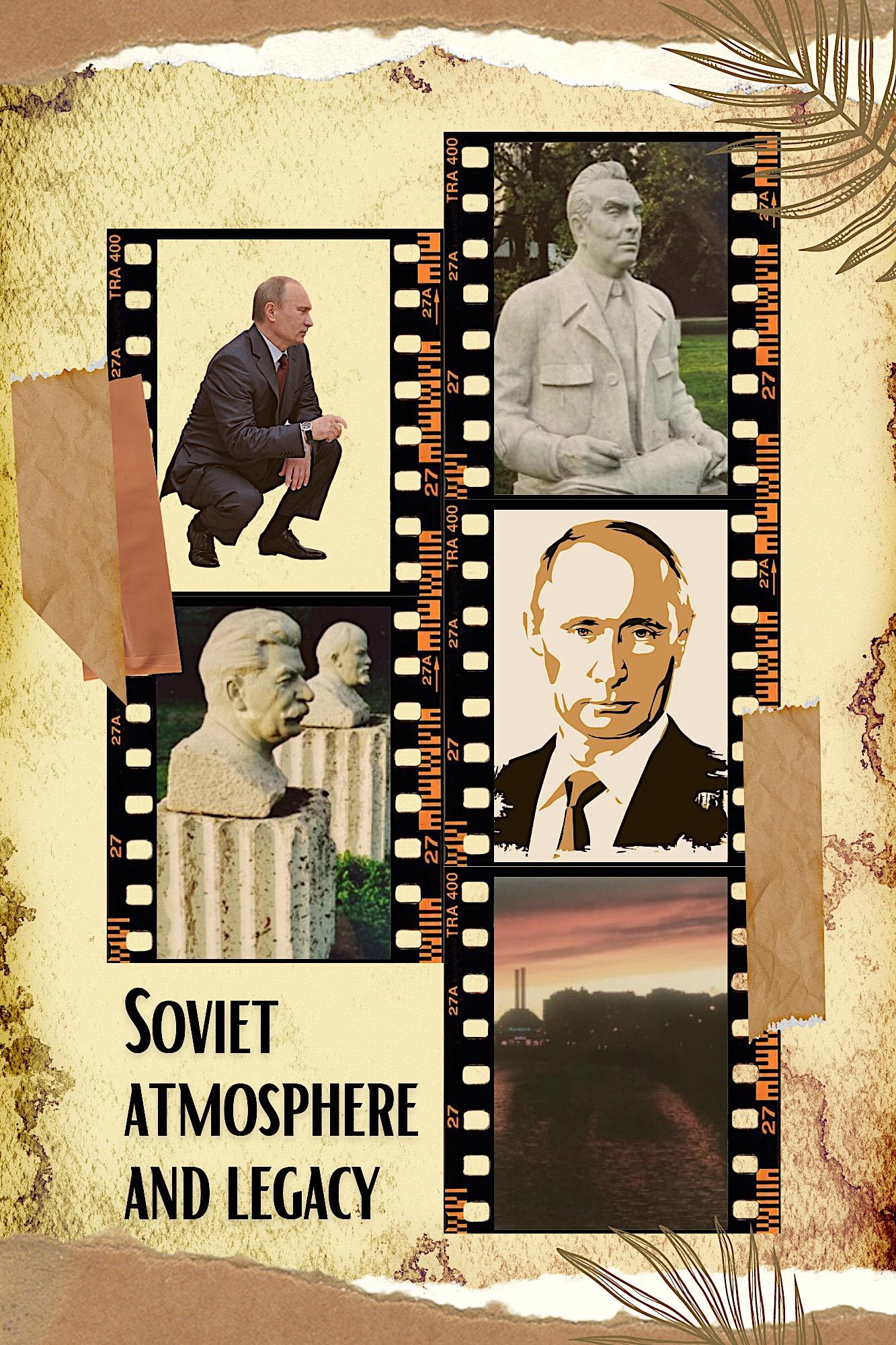
But if he admits today that he does not want to return to this past, it is because he has never tried to defend or restore it. His project was devoid of Marxist-Leninist ideology, of communist values - and dare we say morals? It consisted of a religion of the state, of power, and of an autocracy barely concealing in reality a predatory oligarchy. This is not to deny a form of patriotism, but it was associated with a lack of deep knowledge of history and a willingness to erase or distort parts of it in the good old Soviet tradition. Vladimir Putin talks about Western colonization, but he does not say that the entire history of Russia is that of an expansion towards the East, that is to say also a colonization but this one having been deployed on a contiguous space. His presentation of the emergence of the independent republics from the Soviet Union suggests

that they were created at a distance, far from the will of the people. Nothing could be further from the truth, as there were already strong tensions between certain Central Asian republics and the center even before the end of the USSR. The Russian president seems to be discovering today Ukrainian national feelings that his intelligence services would have hidden from him, which is also a way of explaining the initial strategic error of Ukraine’s invasion. But everyone knew and there was no need for investigations and indicators on the spot.
Putin's silence on the vicissitudes and monstrosities of the Stalinist regime is deafening, and the image of the ‘Little Father of the Peoples’ even seems to be a reference for this new tsar.
33

It is obviously not a question of amnesia when the cereal blockade, now somewhat relaxed, reminds us of the terrible Holodomor of the 30's; it is the same when populations are displaced as Stalin did with the Crimean Tatars, and when one reaches an absolute monstrosity when one separates children from their families to deport them to the heart of Russia with the aim, no doubt, of purifying the race of the ‘genocidal people and Nazis’.
There is thus both amnesia and erasure of memory, an ‘organized amnesia factory’. The banning of the Memorial Association in the autumn of 2021 - the same one that won the Nobel Peace Prizefor its courageous investigative work on Stalinist persecutions, and then on human rights violations in general, was already a particularly worrying warning sign. The concomitant closure of the radio station Echo of Moscow, hosted by Alexis Venediktov, the most free-thinking of the Russian audio-visual panorama, could only reinforce such apprehensions. This erasure of memory was
manifested, for example, by the destruction with explosives in 1931, probably on Stalin's orders, of the Moscow Cathedral of Christ the Savior, which was erected in honor of the combatants of 1812. It was rebuilt in 1989 on the initiative of Yuri Luzhkov, then mayor of the capital. On the other hand, in the historical district of Zamoskvoretche, which burned like all the others after the Napoleonic occupation, many houses and buildings in neoclassical style were rebuilt with the inscription "destroyed by the Moscow fire of 1812 ».
A scenario of the end of Empire?
All empires will perish...historians have sometimes estimated. In any case, it can be said that the spectre of Putin's defeat appeared as soon as the regular Russian troops crossed Ukrainian borders.

35
Whatever the military outcome, a Russia that is outlawed will not be viable in the long term. Ukraine, on the other hand, has already earned its place in Europe.
The lesson of forgotten memory will have to be learned, but the process will not take place naturally: in Russia, re-education of the people by the people themselves is far from guaranteed. In postwar Germany, the ‘Three Ds’ Demilitarization, Denazification, Deindustrialization - were the result of the policy of the occupying forces.

The first two components, applied to Germany, represent a long-term process. The third part does not arise in the case of Russia, as the war industry was not the driving force of the economy.
On the contrary, it will be necessary for this country to get out of its rent economy,
based essentially on hydrocarbon exports. Putin has never been a sort of Peter the Great reformer and builder, despite his youth, which contrasted with the Soviet gerontocracy, except for Mikhail Gorbachev, and the post-Soviet one. A modernity of facade thus made illusion that embodied the oligarchy, the fast and easy fortunes and a youth freed for a time from the shackles and the closure of a communist society.
Contradictions became more pronounced as Russia became largely dependent on the West for trade and investment. Things have since rebalanced in favor of China, but Europe remains Russia's main economic partner.
At the same time, the government's ‘Eurasian’ policy is coming up against the new realities of a Central Asia that intends to pursue its emancipation.
This ex-Soviet Asia is becoming increasingly anxious in light of the aggression of the Ukraine, even though it is still home to significant Russian minorities, for example in Kazakhstan. The former Soviet republics intend to continue their forward march, restrained only by the caution aroused by the prospect of an exclusive face-off with China.
The Tsar of a Russian Island
By attempting to reconstitute a style of power inspired by czarist autocracy and by relying on the parallel power vertical of the Orthodox Church, Vladimir Putin has entered into a slavophile tradition. In doing so, he has been more in tune with the working classes, who have guided him as much as he has guided them, as befits a statesman.
Popular imagination remains oriental, in an innate and natural way, and it largely escapes the great intellectual debate opposing occidentalism to the slavophile current which began in the first

37

third of the 19th century. Kadyrov, the Chechen, or Minikhanov, the president of Tatarstan - both present in the Kremlin for the September 30 speech - are perceived from the outside as representing the marches of the empire, even though they are not geographically very far from Moscow and are even a sort of enclave in the heart of the Russian Federation in the case of Tatarstan. It is not certain, however, that the majority of Russian opinion appreciates the inclusion of a Chechen - and in general of those who are not ethnically Russian - in the war in Ukraine.
But Russian attitude is ambiguous in relation to this Eastern world, which is nevertheless part of the deep unconscious. One only has to think of Rimsky-Korsakov's Scheherazade or Borodin's Polotsian Dances, two works of the so-called Musical Group of Five, which advocated a specifically national music based above all on Russian folk traditions.

Without a clearly defined project, other than that determined by an eternal resentment towards the West, without ideology or reference points, the Russian president has withdrawn into his ‘vertical power’. He has tried to reproduce the triptych of Nicholas I, namely OrthodoxyAutocracy-National Specificity, against the current of a Europeanization in the in the spirit of Peter the Great. Vladimir Putin leads in Ukraine a war of the 20th century in the 21st century, with a mental scheme inherited from the 19th century.
When Russia was threatened in 1565 with invasion (NB: by the Poles), Ivan IV the Terrible wanted to save the Holy Russia. In his film Tsar, Pavel Lungin asks the question whether such a resistance authorizes to free oneself from all moral references and to accomplish all exactions.
39
Ivan the Terrible wants to rely on the Church in his enterprise, as did Stalin during the Second World War. Two conceptions of religion are opposed: the exalted one in the service of absolutism; the authentically spiritual one of the metropolitan.

The latter is a childhood friend of the Tsar, appointed by the latter and who will end up rebelling against the secular power; he embodies a mystical and emotional Russia. The Tsar was not lacking in spirituality either, baptized and married in the Trinity Cathedral of Sergyev Possad to which he was very attached. But in the name of what he believed to be the reason of State and in order to preserve the absolute character of his power, he will have the one who will become ‘Saint Philip of Moscow »'executed. The admirable actor Piotr Mamonov, who plays Ivan the Terrible, summarizes the thought of the latter: ‘as a man I am a sinner, as a Tsar I am just’.
While the war in Ukraine continues and we safe from a new seems difficult to Russia after the the nature of our with it. In any case, have lost by violating international law his country's image, handicapping its and technological development, not to mention alleged massive that will be brought attention of the relevant international bodies. Russia will however remain Europe's neighbor and it will continue its post-Soviet evolution. It is even desirable that it accelerate it in the interest of all.
The filmmaker Pavel Lugin can still be called upon to help us discern a way out of a crisis that is in fact a catastrophe for the entire European continent.




In his film The Island, a man who believes himself to be a criminal takes refuge in a monastery in the northern regions. This geographical isolation is also a mental confinement in a remorse which, by dint of being repeated, can lead to a form of redemption. Such a step will always remain possible for Russians as individuals. But Putin seems walled up in his myth of Stalingrad and of a possible reversal of fate at the end of a relentless winter.
PP

Hasn't his confinement, accentuated by the pandemic, finally led him to be affected by a Stockholm syndrome?
Hasn't he indeed become his own jailer and doesn't he love his character?

43
PATRICK PASCAL
Former Ambassador, Former President of ALSTOM Group in Moscow, Founder and President of "Perspectives Europe-Monde" Knight of the National Order of Merit. ALSTOM President in Moscow for Russia, Ukraine, and Belarus. PASCAL’S diplomatic career has focused on strategic issues, East-West and North-South, the UN, the Arab world, Europe, and Central Asia, during his postings in Berlin, Rome, New York, Moscow, Riyadh, Damascus, London, and Ashgabat.
• Ministry of Foreign Affairs, Political Affairs Division, United Nations and International Organizations.
• Permanent Mission of France to the United Nations, New York.
Cabinet of the Minister of Foreign Affairs, Paris.
• Ministry of Foreign Affairs, Political Affairs Division, United Nations and International Organizations.


• Embassy of France to the GDR, East Berlin.
• Ministry of Foreign Affairs, Directorate of Political Affairs, Strategic Affairs and Disarmament.
Publications : - Journal d’Ukraine et de Russie, les crises and l’évolution du système international, VA Éditions, 2022.
Academic background: - Sciences Po Paris, Institut National des Langues et Civilisations Orientales, Sorbonne, Universität des Saarlandes, Rheinische Friedrich-WilhelmsUniversität Bonn.










LINDA RESTREPO

49
CYBER SECURITY | AI | EXPONENTIAL TECHNOLOGIES
What is Ethical Spying?
OffSec or Offensive Security. It is the power of going deep into the Dark Side. The power of understanding the enemy and duplicating his repulsive and hostile adversarial skills. You are required to become the very real villain you hate and are going after. Not only to duplicate his adversarial skillset but to exceed it.

Homeland security is protecting the United States from domestic and foreign terrorists. With IoT, Cybersecurity is an essential function and priority of Homeland Security.
Cybersecurity is premised on finding the needle in the haystack, not thinking
outside of the BOX but proceeding because there is and never has been a BOX.
Cyberterrorism is an addictive world, reaching down to the bottom hole where the difference between morality and immorality is slim to none.
The real world of intelligence-gathering is unforgiving and has little or no correlation to the description given to you by many movie directors, politicians, government agencies, and academia.
Surprise, surprise, the typical agencies we love to talk about and criticize, CIA, ISI, RAW/IB, FSB, MOSSAD, MI6, and DIA, are not intelligencegathering agencies in the true sense.
They are based on analysts who report on the data they receive and analyze. We often wonder how in many instances, it is so difficult for a superpower to curb evils such as cyberterrorism, black marketing, and illicit drug trade.
A conflict becomes visible when the "analysts" often have NO clue about the data source or report they are investigating. And if we've learned nothing else - we all know that data is only as good as its source. This helps put into perspective why many threats have gone unnoticed.
Let's take a closer look at the Federal Government. It used to function somewhat efficiently 200 years ago
when it was a small isolated, rural society. It is now inadequate for a technological society that has grown huge and hideously complex. Its chassis is overloaded with bureaus, commissions, political partisanship, and power steering.
In intelligence, it is critical to be fiercely loyal to your immediate supervisor, and no one else matters. You will never know what your supervisor knows, and this is the structure applied as the intelligence data proceeds to the highest authority. It is based strictly on a "need-toknow” basis.
Intelligence gathering is broken into different modes such as – the government

51
LINDA
CYBER SECURITY | AI | EXPONENTIAL TECHNOLOGIES

RESTREPO

53
“ONCE YOU START DOWN THE DARK PATH, FOREVER WILL IT DOMINATE YOUR DESTINY.”
— . ” DARTH VADER, STAR WARS: EPISODE V - THE EMPIRE STRIKES BACK
loves acronyms, so here we go - OSINT, CYBINT, and HUMINT. Open Source Intelligence (OSINT), Cyber Intelligence (CYBINT), and Human Intelligence (HUMINT).
OSINT is the process of gathering intelligence from publicly available resources. CYBINT is the process of explicitly gaining intelligence from available resources on the Internet. HUMINT is gaining intelligence from humans or individuals by analyzing behavioral responses through direct interaction.
Before executing an attack, the enemy focuses on our weaknesses, performing reconnaissance by harnessing the power of freely available information extracted using different intelligence-gathering modes.
AI, IoT, Machine Learning, and in the future, Blockchain Technology make such information concerning our weaknesses easy, cheap, and readily available. The most widely used intelligencegathering resources are the Internet, traditional mass media including magazines and newspapers, publications such as journals and conference proceedings, corporate documents, and exposed networks.

The real job of intelligence gathering is performed by a short list of top-secret agencies who may or may not have a name or nationality. They are identified by an alphanumeric serial signature, with only a handful of top government people knowing who they are or how they operate.
They are some of the most powerful operational bodies on earth. The larger these organizations get, the more secrecy they start to observe, growing to a point where they can stop informing the government of its actions. They do this when they are not funded by "taxpayer's money" but by other means.
The thin line between morality and immorality in intelligence doesn't matter anymore. As independent agencies with access to almost every government in the world, they are only too aware that knowledge comes with a price and to the high bidder.
In warfare, Intelligence gathering provides decisive or critical information about what the enemy is doing or will do. It can offer enemy weapons, troop strengths, and operational plans. Techniques vary from human informants to satellites orbiting the earth. Intelligence gathering is both offensive and defensive.

55
As cybercrime continues in frequency and gravity, it has become a doctrine similar to Military doctrines for countries worldwide, such as the United States, China, North Korea, and the United Kingdom, to develop strategies and capabilities to counteract it.
AI and Machine Learning have become critical to cybersecurity and intelligence in terms of prevention and engagement. Machine learning excels at combing through mountains of data to establish baselines and patterns. A welldesigned ML system focuses on anomalies and can detect variants of attacks that have never been seen before just by detecting deviations from a pattern.

Adapting the words of Julian Huxley, "Evolution (cybersecurity) is.. seen as an enormous number of blind alleys, with a very occasional path of progress. It is like a maze in which almost all turnings are wrong turnings. The goal, however, is not a central chamber, but a road which will continue indefinitely."

“You are required to become the very real bad villian you hate and are going after. Not only to duplicate his adversarial skillset but to exceed it.”
57
- Linda Restrepo-

LINDA RESTREPO
is the
Director of Education and Innovation Human Health Education and Research Foundation. She is recognized. Women in Technology Leader, Cybersecurity, and Artificial Intelligence. Restrepo’s expertise also includes Exponential Technologies, Computer Algorithms, Research, and Implementation. Management of Complex Human-machine Systems.
Global Economic Impacts Research. Restrepo is President of a global government and military defense multidisciplinary research and strategic development firm.
She has directed Corporate Technology Commercialization through the U.S. National Laboratories. Emerging Infectious Diseases, Restrepo is also the Chief Executive Officer of Professional Global Outreach. Restrepo has advanced degrees from The University of Texas and New Mexico State University.
EDITOR|PUBLISHER

59
AI ACCORDING TO

XI JINPING
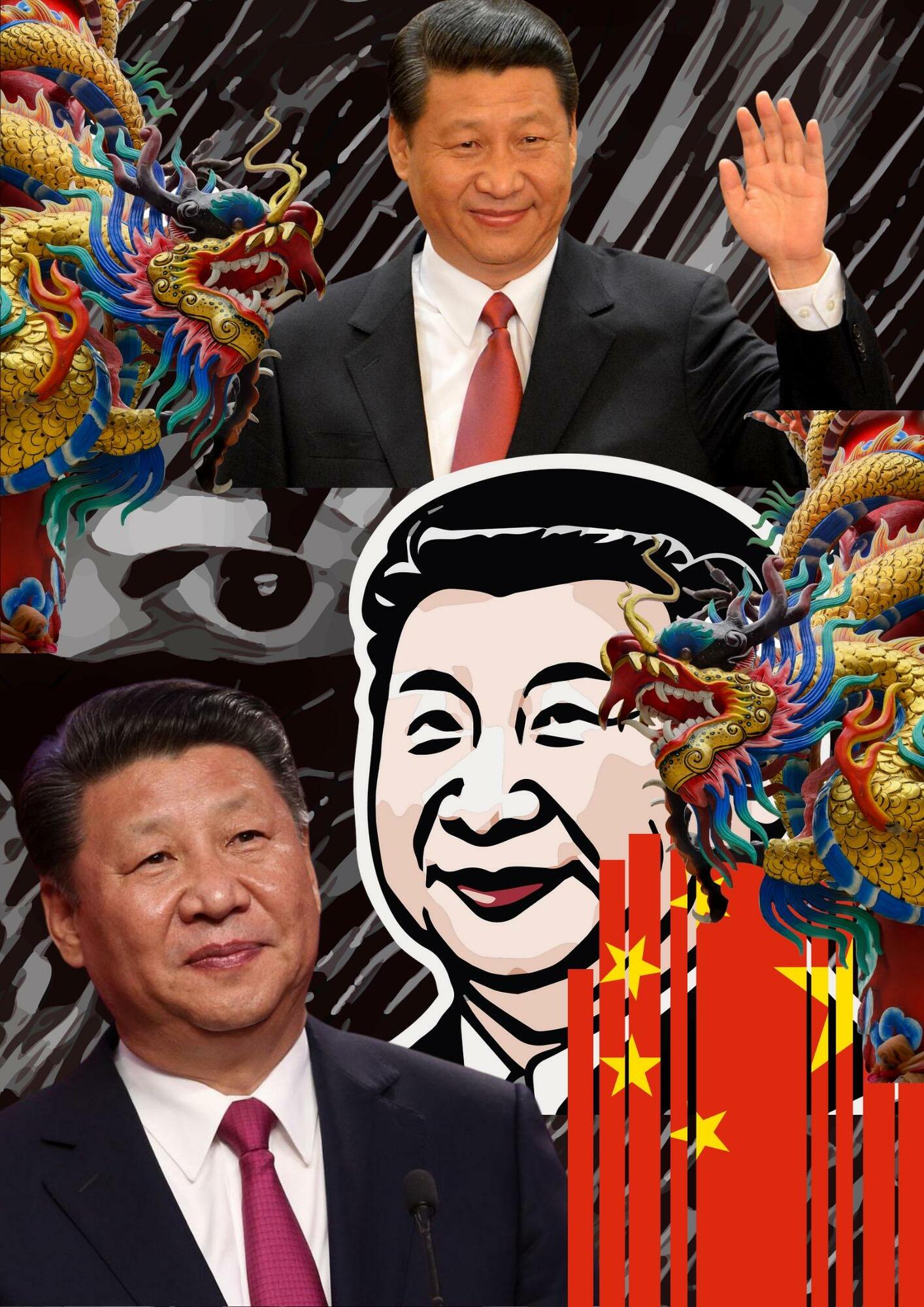
The Development of Artificial Intelligence in the People's Republic of China (Development points and projects)
Making machines mimic or even surpass human intellectual behavior and thinking methods have always been a scientific field full of rich imagination and great challenges. The recent great advances in Artificial Intelligence technology represented by driverless cars and the AlphaGo game have

Honorable de l’Académie des Sciences de l’Institut de France
GIANCARLO ELIA VALORI


led to enthusiasm and a great deal of funding for the AI field. Considering the development bases, existing problems and opportunities of Chinese AI, strategic thinking on the progress of this industry is continuously proposed for discussion and decisionmaking reference.
The Internet+ action guidance opinions issued by the State Council have clearly stated that AI is one of the key development areas for the creation of new industrial models.
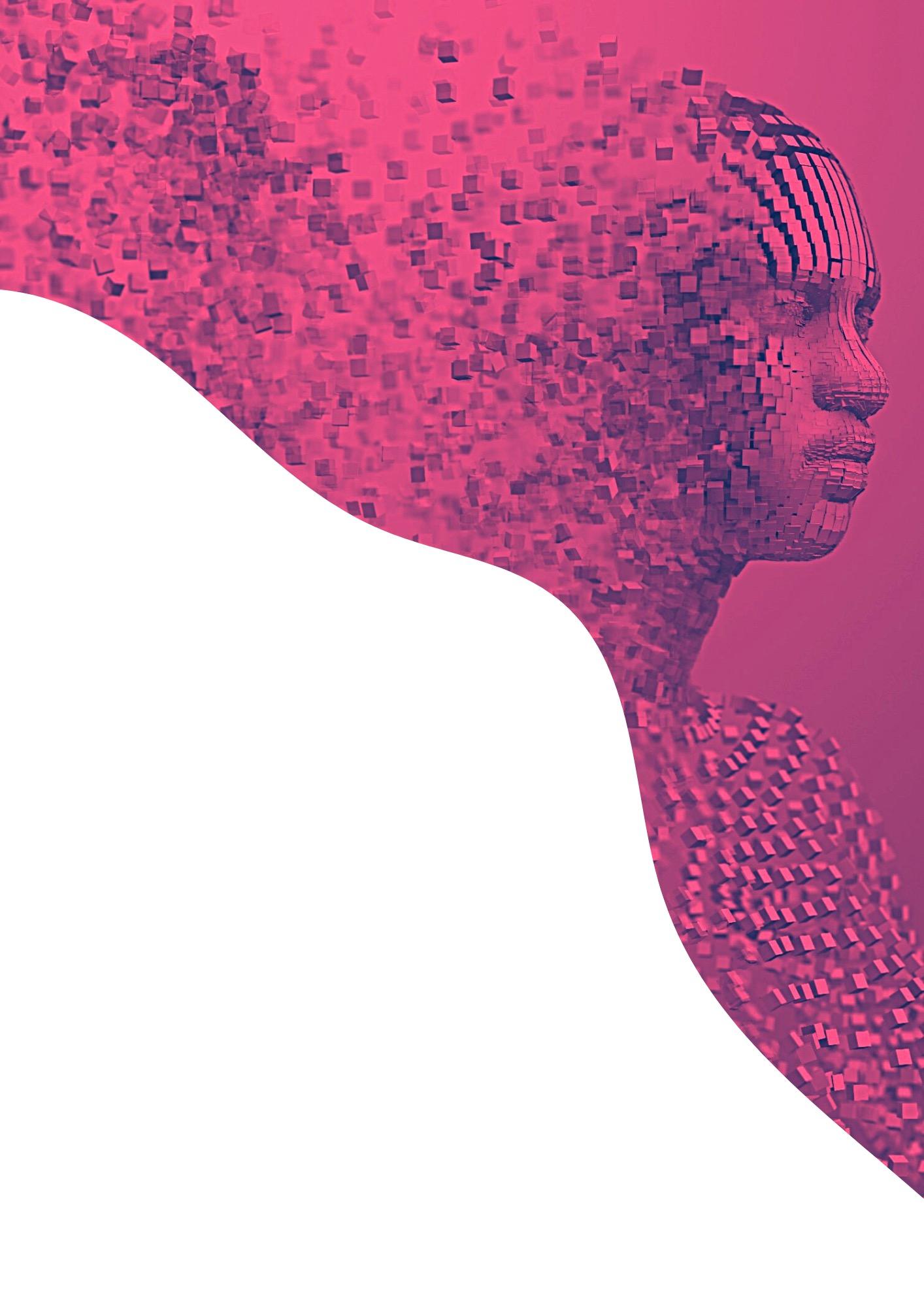
63
PresidentofInternationalWorldGroup
Four Departments, in addition to the National Development and Reform Commission and the Ministry of Science and Technology, have jointly issued implementation plans for Internet+.
The development plan has been promoted in three main aspects and nine minor items. Smart homes, smart wearable devices and intelligent robots will all become key development support projects. The implementation plan clarifies the development priorities and support projects specific to the Artificial Intelligence industry, thus showing that this field has been raised to a national strategic level.
Considering the great attention paid by the State, increased investment in scientific research and an injection of dividends for talents are expected to accelerate industrial transformation, such as facial recognition, language recognition, intelligent robots,
and other application segments will continue to expand and further promote their marketing.
AI has reached the peak of China's national strategy, and has shown the need to learn from the advanced Western countries’ research practices to discuss, launch and implement the national plan.
In recent years, the United States of America, the European Union and Japan have successively launched numerous programmes and huge investment, covering future information technology, as well as medicine and neuroscience. Faced with fierce international competition, China is learning from the experience of the above stated and other countries across disciplines and sectors. The agenda includes the implementation of a project that not only involves AI, but is also inseparable from life sciences, particularly neuroscience. This is so that greater resources can be concentrated on solving the most
pressing social needs, such as the development of diagnostic and therapeutic methods for the prevention and treatment of brain diseases, in particular neurodevelopmental diseases, mental illnesses, early diagnosis and intervention in neurodegenerative diseases. The main research focus is on the principle of brain functioning and frontier fields relating to the prevention and treatment of major brain diseases.
As already seen, the foundation of AI involves mathematics, physics, economics, neuroscience, psychology, philosophy, computer engineering, cybernetics, linguistics, biology, cognitive science, bionics and other disciplines and their intersections. The subject of AI has a very broad and extremely rich research content, including cognitive modelling; representation, reasoning
and knowledge engineering; machine perception; machine thinking and learning; machine behaviour; etc.
Various AI researchers study such content from different angles. For example, from the ones based on brain function simulation; on the application field and application system; on the system structure and supporting environment; on the distributed artificial intelligence system; on machine theorem demonstration; on uncertainty reasoning, etc. Chinese scholars have made some important achievements in machine theorem proving, hierarchical knowledge representation and reasoning, automatic planning, iris and speech recognition, extension, evolutionary optimisation, data mining (the process of extracting and discovering patterns in large datasets involving methods
65
ranging from machine learning intersection to statistics and database systems), etc. In AI basic research, Chinese experts have great international influence. In general terms, however, the results are not sufficient, the scope is not broad and the overall influence needs to be further improved.

AI basic research is the cornerstone of sustainable development of the related technology, and only by laying sound foundations in it can we provide the driving force for the vigorous development and comprehensive upgrading in the field of its applications.
AI basic research needs to be comprehensively strengthened. Innovative multi-disciplinarity needs to be encouraged, and importance needs to be attached to it on a forward-looking basis. The demand for software is an inexhaustible source of technological Innovation.
AI is considered the fourth industrial revolution.
Its theme is three intelligences: factory, production and logistics. The main content of the Made in China 2025 plan is to establish a production line, adopt a management and operation model and start with the following five aspects: design, technology, production, service guarantee and management. The key role of AI technology in smart manufacturing can only be seen from the progress of these aspects. The implementation of AI technology can be extended to all investment classes and subjects. For example, the intelligent development of technology applied to industrial and mining enterprises includes five points:

67
1) using intelligent machines (including smart robots) to replace work in
hazardous, toxic, radioactive and other harmful environments and in heavy, arduous, repetitive, monotonous, high-altitude, dusty and other difficult conditions, to reduce the intensity of physical and mental work and protect workers (the health issue);
2) using AI technology to design factories and mines, production workshops, sections and equipment, as well as quickly optimise the design scheme and achieve the design intelligence of production;
3) implementing AI technology to fully achieve the production process;

4) developing an intelligent consultation and decision-making system: providing scientific advice, decision-making and management of the production process, and moving towards intelligent production and staff management;
5) researching and developing various expert systems for production planning: monitoring and control of the production process; intelligent fault diagnosis of production systems and equipment; and improvement of labour productivity and product quality.
AI developers combine the characteristics of various enterprises and promote Made in China 2025 and Internet + plans as an opportunity. They seize the historic opportunity of the second machine revolution, achieve AI and vigorously develop these fields. Smart technology and industry inject ideas into the “new” normal of the economy. There is a need to improve the research, development and innovation capabilities of AI technology in the industrial field; to develop high-level products and avoid low-result repetition and haphazard competition.
We need to deepen the promotion and implementation of these technologies and make the smart industry bigger and stronger.
As a high-tech segment, AI needs to innovate policy mechanisms, management systems, market mechanisms, and performance transformation to provide an excellent environment for its and its industries' development and to accompany the healthy progress of initiatives. Policies need to be introduced to encourage the implementation of AI in the promotion and market development of technology and to broaden the support of national policies, so that new funds and applications will be obtained and new technologies from the laboratory to the field be accelerated as soon as possible.
In the process of developing and implementing AI technology, we need to be pragmatic and orderly. AI education intensifies the driving force for developing the related technology and industry, and it is also the fundamental guarantee for nurturing and cultivating high-quality AI talents and for the sustainable development of related technology and industry. China's AI education initially created a subject teaching system, and curricula and courses at different levels were offered in universities such as computer science, intelligent science and technology, electronic information and automation.
 The Development of Artificial Intelligence in the People's Republic of China (Talent creation and comparison with the United States of America)
The Development of Artificial Intelligence in the People's Republic of China (Talent creation and comparison with the United States of America)
69
The existing problems of AI development in China and the basic construction of AI are inseparable from the education and training of AI experts. Only by nurturing and cultivating a sufficient number of high-quality AI talents can the smooth development of AI in China be ensured, so that it can climb to the top of international AI.
In terms of AI talent training, the State, Commissions, Ministries, and Departments have made and are making the following noteworthy suggestions:
1) increase AI talent training as a national educational priority.
Not long ago, AI-related playful and recreational activities promoted a wave of AI technology to promote economic and social intelligence in China. AI talents are the top priority in the construction activity to do
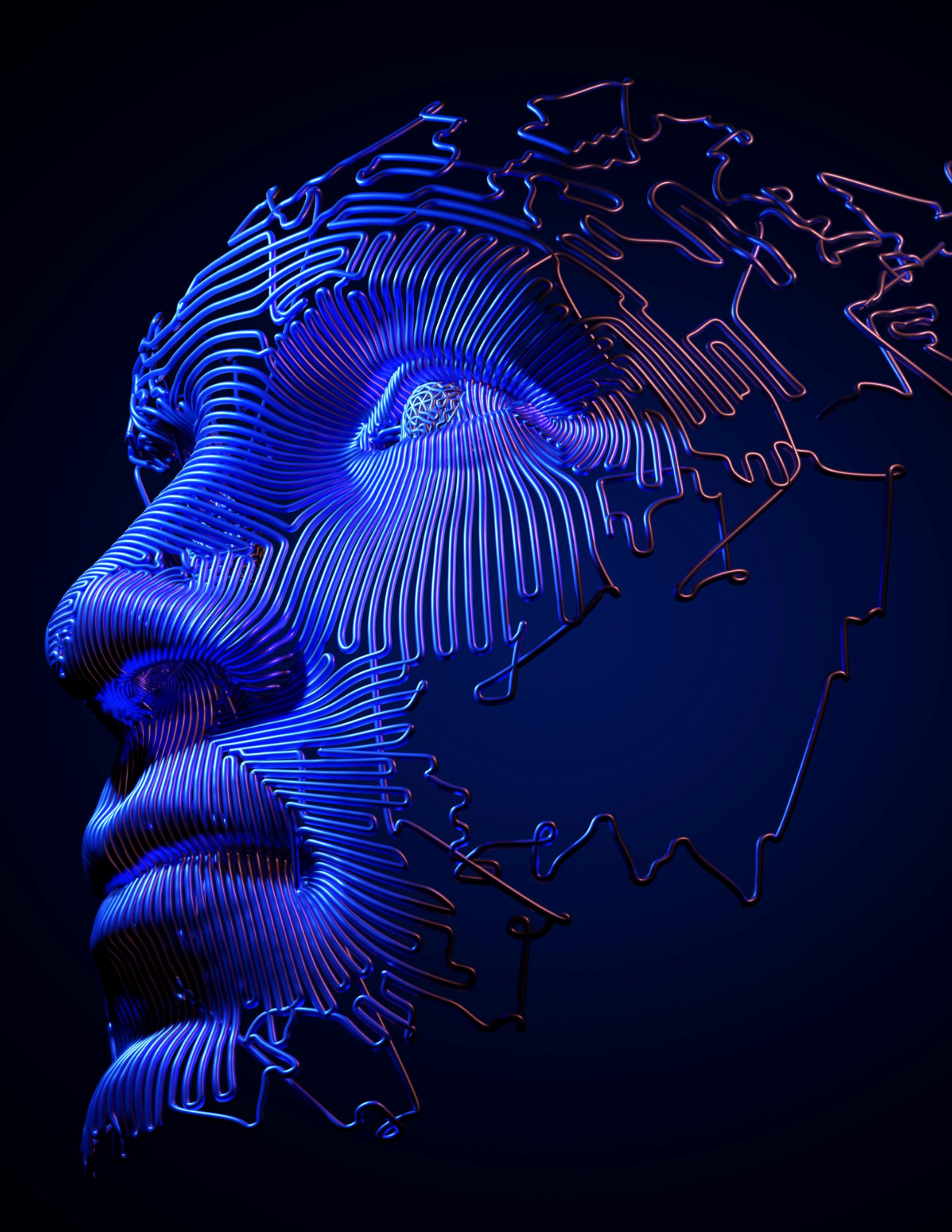
a good job in planning development, mastering key technologies and promotion. Implementing all this requires high-quality talents. With a view to meeting this social demand, we need to comprehensively plan the training of high-quality AI talents and provide a guarantee for China's AI to enter a new period of opportunities for sustainable development. We need to further improve the understanding of AI staff training, establish a comprehensive planning system to create experts and raise the level of preparation as a national educational priority.
2) Establish and standardise AI education at all levels.
According to market demand, we need to comprehensively standardise AI education at all levels and open various schools of a certain scale and proportion,
including universities, vocational and technical colleges, AI institutes, technical schools. In China, the Ministry of Education comprehensively expands the current intelligent science and technology, as well as the professional environment, which supports its management. The same holds true for other major universities which are taking action to strengthen the academic teaching of AI, also through the establishment of post-graduate education in some related institutes, as well as spreading basic technologies to primary and secondary schools. The same applies to popular science courses, which provide various forms of extracurricular activities, as well as helping to nurture and cultivate the interest of students of all ages and schools. This is because the level of teachers, who standardise and organise the preparation of various teaching materials, has improved.
3) Multimodal and multichannel training of high-quality AI talents.
Efforts are made in China to explore and search for various types of high-quality AI talents through multimodal and multichannel ways, carrying out activities aimed at enhancing and perfecting market-oriented products, and having the experience to promote them.
The competent government Departments provide relevant policy support, and State and private research institutes primarily carry out AI product innovation, so that AI science and technology staff perform their tasks comprehensively. Besides participating in research and development of AI products, the main task of

71
schools and colleges is to provide highquality knowledge resources at all levels Companies strive for excellence in the production of AI products, so that skilled technicians and workers can fully perform their roles. An incentive mechanism for AI experts is established to encourage a higherlevel elite to stand out. University students, graduates and science and technology practitioners engaged in AI learning and development are encouraged to pursue AI technological innovation and entrepreneurship and provide the business fund support for their innovative ideas and prototype results.

4) Make full use of the Internet to nurture and cultivate AI talents.
Full use is made of the Internet technology to lend effective technical support to provide effective means for nurturing and cultivating AI talents. The high-level AI platform is used, in line with international standards, to create and improve the domestic AI network teaching platform, provide network education services for AI teaching at all levels, and offer auxiliary teaching tools for other courses. Some scholars or entrepreneurs believe that China's AI technology level is already comparable to that of the United States of America.

73
AI in China
We need to scientifically and objectively evaluate the existing results. We also need to fully reaffirm the achievements and fully understand the shortcomings. Overestimating the existing AI achievements in China is neither realistic nor conducive to the healthy development of this industry.
The United States of America is now the country with the highest overall level of AI technology. Analysing the gap in AI between China and the United States of America helps to maintain a clear understanding. Many experts in the field of AI have pointed out that following the US theory in AI has meant that such
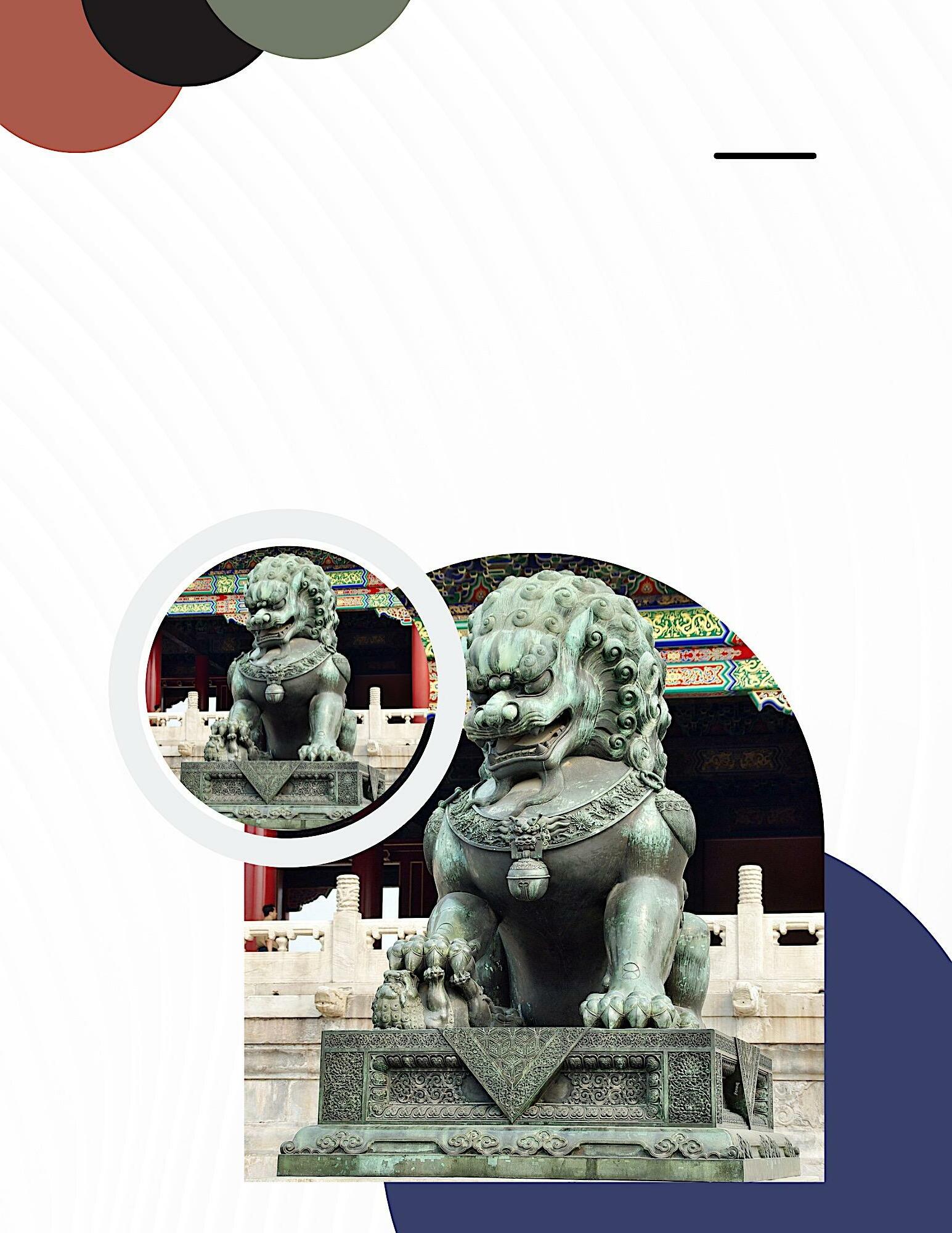
AI in China
applications and innovations are making the industry catch up quickly and regain ground. However, there is still a big gap with the United States of America in terms of basic theoretical research. Very few people are carrying out basic theoretical research on AI in China.
For example, the United States of America places brain science and other neurosciences at the top of research, while China’s independent research and development capabilities in this area are relatively weak and there are gaps in discoveries and innovations.
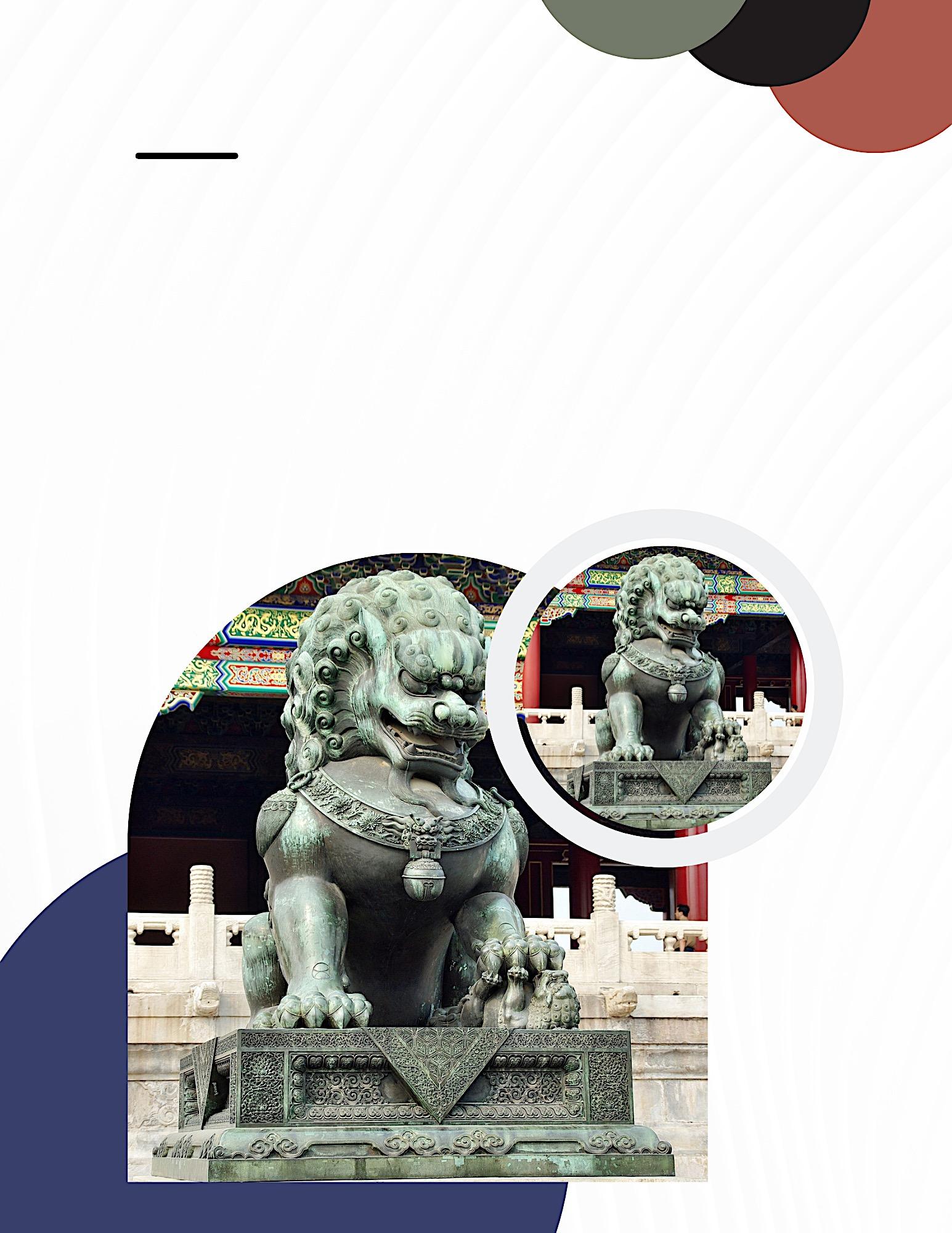
75
Furthermore, many articles on deep learning have been published in China, but little research is truly innovative in theory or has significant application value. The Americans are already figuring out what the next AI will be, while such a study has not yet begun at full speed in China. This is the biggest challenge facing the country: it is a difficult problem, involving a wide range of aspects, which cannot be solved by one or two teams. This gap is largely due to the national academic evaluation system and the orientation of practical application. There is room for improving the university analysis criterion: it may take 5-15 years to fully catch up with the United States in the field of AI.
US companies invest a lot of money to train a group of pure high-level technical staff who, from the moment they obtain
a Ph.D. will be recruited by companies and employed in research and development of pure AI technology. Not surprisingly, such an elite team, driven by scientific and technological interests and beliefs, is far ahead at world level in AI research. Few companies in China are willing to spend a lot of money to train a purely technical AI research team and there is also a lack of incentive mechanism within companies. The level of AI research in national universities is also far below the world-leading level.
The Development of Artificial Intelligence in the People's Republic of China (Advantages and terms of development)
Artificial intelligence in China is facing unprecedented development opportunities and has many advantages in

terms of development. Let us make a few considerations in this regard.
1) International trends
Significant progress has been made in the IT environment and the technological level of human society between big data, cloud computing and the Internet, which are closely related to AI and have developed quickly. AI has started to have a significant impact on the structure of human society, and the dual humanmachine environment is gradually developing into the third humanmachine-intelligent machine environment. The cooperation and coexistence of humans, machines, and intelligent machines will become the new normal of the social structure.
Such harmonious coexistence is hopefully not only a need for social development, but also provides a distinct place for AI.
Throughout the international community, the development trend of science and technology, as well as AI, is an important sign for human society to keep moving forward after entering the IT field at every level, and is the general trend of international scientific and technological development. Recovery and development inject positive energy into China, and this is also a period of unique development opportunities for China's AI.
2) AI must be guided by the national strategy
Looking back to the process of AI development in China, we

77
we can see that the public's understanding of AI, the development of its industry, and the government's emphasis on it have all undergone major changes.
As mentioned above, the State’s top leadership encourages the development of artificial intelligence.

President Xi Jinping, Prime Minister Li Keqiang and others have provided great support and clear instructions to the development of AI and robotics in China and have defined target requirements.
The State Council, the government and the relevant departments have formulated and released relevant strategic and development plans, such
as the three-year Internet+ Implementation Plan, Intelligent Manufacturing 2025 and, in the past, the Robotics Industry Development Plan 2016-2020, etc. The national strategy and government promotion are the source of the healthy development of China's AI technology and industry. Without the country's overall political coordination, AI will be impossible to achieve since it is only with the Chinese strategic support that it will be able to make great strides.
3) Internal development needs AI development is a need for the transformation and upgrading of national industries.

79
The development of intelligent industry and economy requires the continuous innovation of AI. The AI industrialisation is the general trend of national development. China’s economic and social growth is facing new opportunities and challenges. The lack of dividends in labour, the advent of a society with a rising average age, the needs for elite talents and the development of key technologies must be solved one by one through development. The development of AI and intelligent machines can lead to the “replacement of humans by machines” and to industrial transformation and upgrading. It will provide new momentum and become a new trend for innovation. It cannot be said, however, that the development of AI can solve all economic and social problems, but it is safe to say that the AI industry can create good opportunities to solve the existing economic and social problems.
The Chinese social progress and economic development urgently need the effective presence and participation of AI.
The industrial transformation, upgrading and reconstruction of China's growth also provide a “useful place” for the development of AI technology and industry.

4) The advantage of intellectual resources
Although China’s AI has started late and has gone through a long and winding development path, it has unique advantages in terms of intellectual resources.
Firstly, AI focuses on software and the Chinese have a good tradition and special wisdom in this regard. Wu Wenjun, known as the father of Chinese Artificial Intelligence, has emphasised that China is not only suitable ground for the mechanisation of mathematics as a typical mental work, but also fertile ground for the mechanisation of all kinds of AI.
Ancient China was the birthplace of the transformation of mental work into factual achievementalthough it was seen as an intellectual achievement and not as a practical application: suffice it to say that gunpowder was not used in wars, but was mostly used in recreational events.
Secondly, China currently has sound foundations, effective means and a wealth of experience necessary to develop the true mechanisation of mental work. The shushu method (by “art of predictions” we mean a series of methods for predicting the future developed in pre-imperial China, which played a significant role in the history and culture of the country), used to study even mathematics in Chinese history, is similar to the algorithm currently used to study AI.
China has a huge Internet user base, the largest number of netizens and talents, who form an important advantage in terms of resources of the AI group.
Netizens are people who share a common interest and active engagement in improving the Internet, thus making it an intellectual and social resource.
The term was widely adopted in the mid-1990s as a way to describe those who inhabit the new geography of the Internet.
Internet pioneer and author Michael F. Hauben is credited with coining and popularising the term.
Thirdly, a large number of repatriated experts sent by China to study AI abroad have become the cornerstone and the academics of research and development on the subject, and are also extremely important for the industrial application and training of a new generation of teachers and professors.
Fourthly, China's pro-reform and opening-up development environment will continue to attract more overseas students and foreign experts engaged in this field to join the common path of improving AI on a global scale.

81
China's AI technology and industry is in the best period of development opportunities, provided that the talent strategy is well formulated and implemented, so that there is no longer the need to go abroad to learn, and a national school can be created.

5) The preliminary foundation of the industry
Compared with the robot industry, China's AI industry started very late, but in recent years it has made great progress in its research achievements and industrial transformation, which is not in the same situation as it was years ago. In the current context of deep development and wide application of big data, cloud computing and the mobile Internet, national and foreign IT companies have seized the opportunity to implement the AI industry.
Taking the smart voice sector as an example, its potential market is worth 10 billion US dollars: China's Baidu, and the US Amazon and Google are conquering the top positions, and competition from smart voice cards of technology giants has begun to take shape.
The increase in the size of China's voice industry is mainly due to the following three reasons: (i) the government's political and financial support for the research, development and industrialisation of intelligent voice technology has created a favourable environment for the development of the voice industry; (ii) voice technology suppliers continue to optimise product performance, further deepening the application of intelligent voice in vehicle information service systems, smart homes and other fields; and (iii) the popularisation of 5G networks (5th Generation),
big data development and cloud computing provide a strong guarantee for intelligent voice applications. These three reasons are also the fundamental basis for the development of this industry in China.
At present, information technology giants take intelligent voice as an entry point and proactively implement development in the field of AI. Internationally, Internet companies such as Google, Apple, Microsoft, Amazon, IBM, Facebook, etc., which have proactively promoted the research, development and application of intelligent voice technology, have taken this as an entry point to initiate the scheme of the entire AI field. At the same time, Chinese national companies such as Baidu, Tencent, Alibaba, iFLYTEK, Xiaoi Robot, Spichi, Yunzhisheng, BGI and Jietong
are proactively implementing AI based on intelligent interaction (voice and text).

Besides the intelligent voice industry, China also has some innovative products and industries in other aspects of natural language processing. Furthermore, image processing, machine learning, smart driving, smart home, smart sensors and other fields have also been planning the arrangement of elements that will make China's related software independent. China’s AI industry is gradually taking shape and its standardisation also needs to be strengthened.
6) Financial Assistance
With the fast development of the economy and the unprecedented improvement of national strength, China's monetary and financial supply has a respectable international status and has invested massively at home and abroad.
83
In recent years, the national capital market has paved the way for the development of the AI sector. With such progress, it will be able to create cutting-edge industries. These new giants of national entrepreneurship could evolve exponentially in a short time. At the same time, a talent or a business idea could sprout from even a small company or a single, as yet unknown manufacturer. The capital market's enthusiasm for intelligent robots has caused the stock horizon to show a rare pattern. Investment in the robotics industry has increased and the amount of robotics industry’s financing has more than tripled. At the same time, the number of

mergers and acquisitions in the robotics industry is also increasing year by year. Many listed companies have been involved in the mergers and acquisitions of robotics companies. Some national companies have started to turn to foreign markets, thus giving way to a larger scale of development.
With the further implementation of the Made in China 2025 plan, the potential energy of China's robotics industry will be further released. There are signs that once the country has fully introduced an AI strategy, national and foreign financial capital will be invested in the AI industrial chain with the same enthusiasm as for intelligent robots.

85
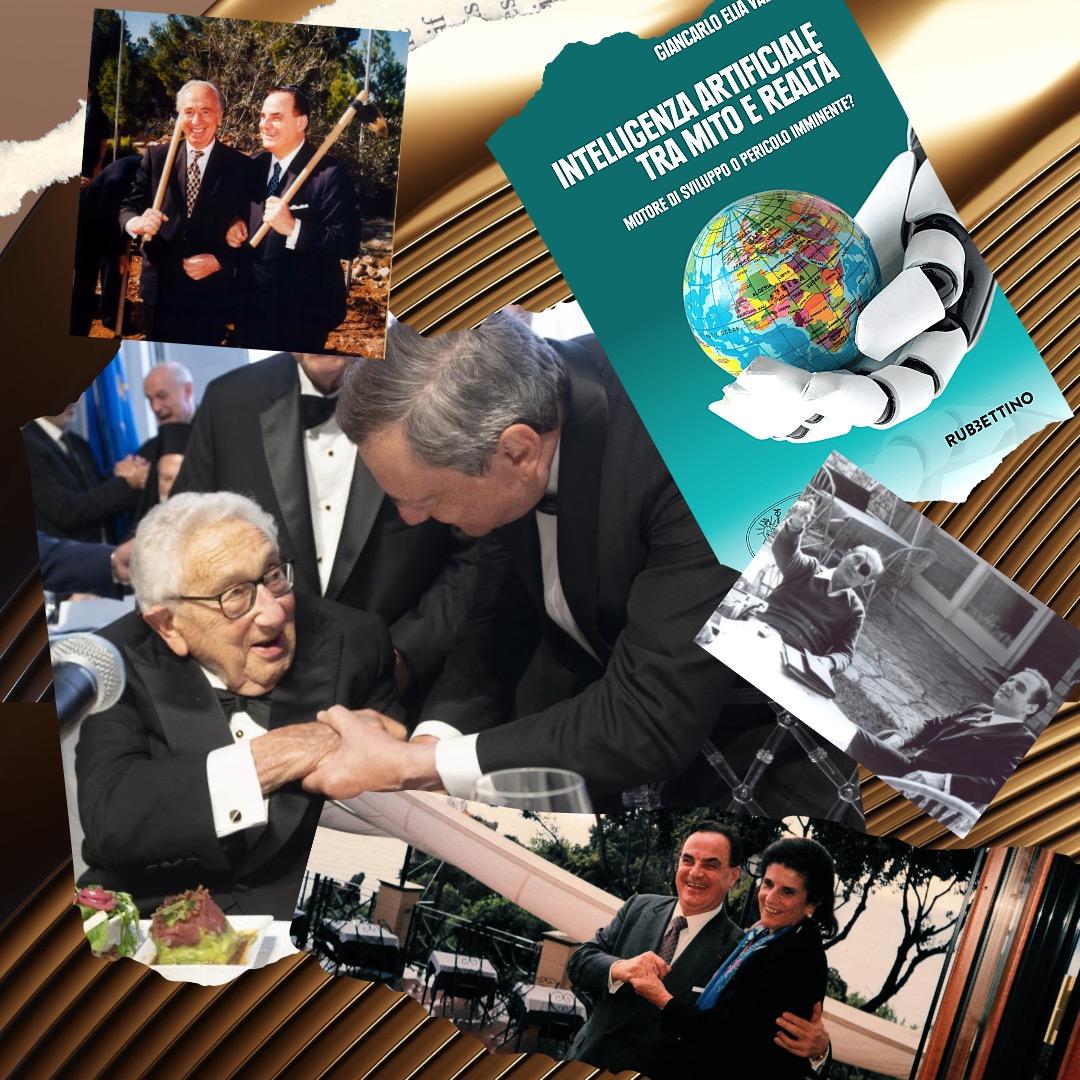


Professor Giancarlo Elia Valori is a world-renowned Italian economist and international relations expert, who serves as the President of the International World Group.
In 1995, the Hebrew University of Jerusalem dedicated the Giancarlo Elia Valori Chair of Peace and Regional Cooperation. Prof. Valori also holds chairs for Peace Studies at Yeshiva University in New York and at Peking University in China.


Dear Professor & President Giancarlo VALORI, “Genuinely, thank you. . . for your longterm support, kindness, and friendship with our School. I would also love to avail myself of this opportunity to express my deepest respect for your zealous effort and great contribution to promoting peace, solidarity, and mutual understanding among diverse cultures and peoples”.
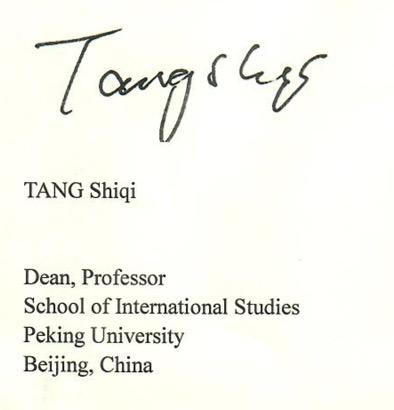
Among his many honors from countries and institutions around the world, Prof. Valori is an Honorable of the Academy of Science at the Institute of France, as well as Knight Grand Cross and Knight of Labor of the Italian Republic.
 Giancarlo Elia Valori Edificio Valori at Peking University
Giancarlo Elia Valori Edificio Valori at Peking University


91
THE AI RACE WINNER WILL CONTROL AI IMPACTS ON SOCIETY

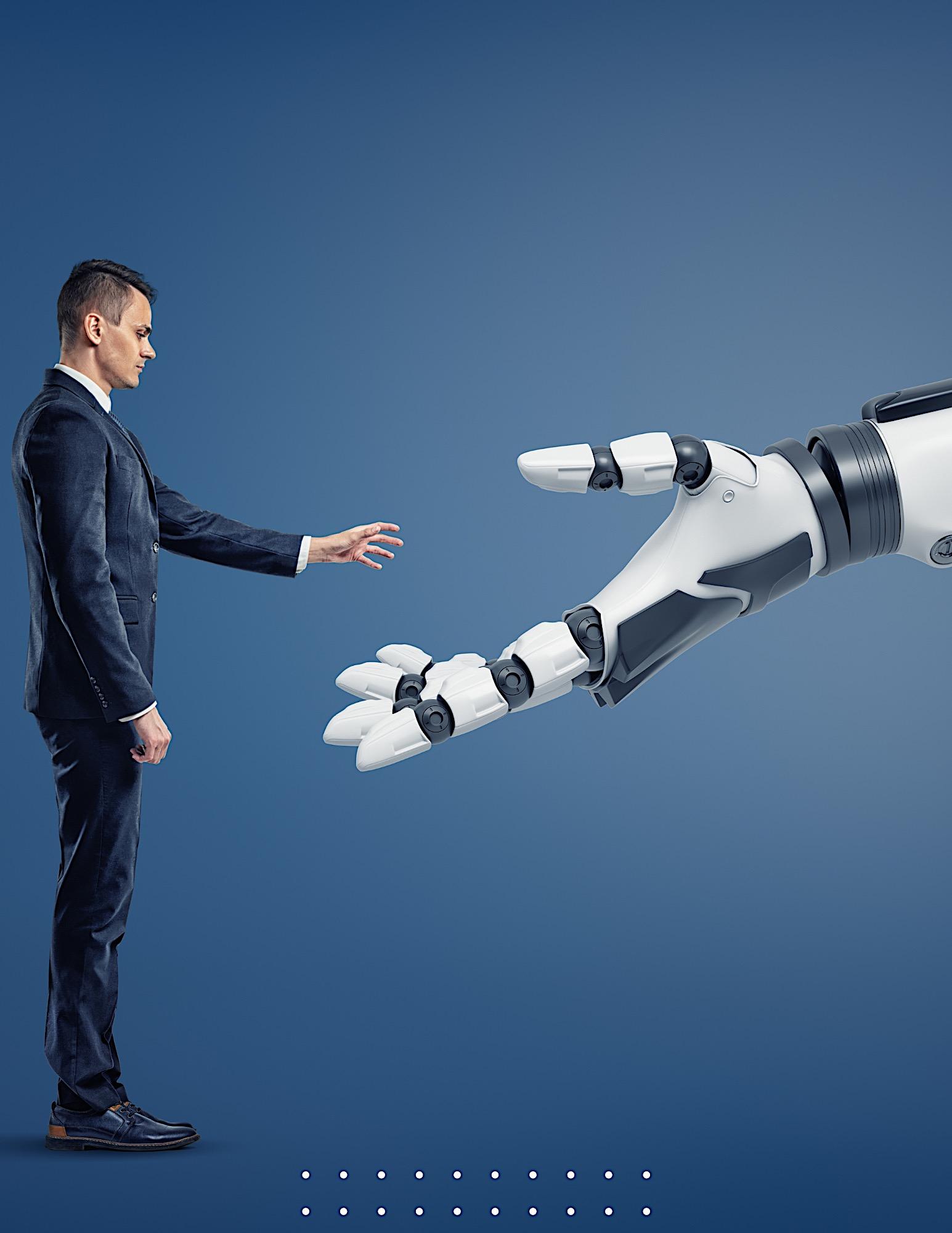 Alfred D. Hull Dr. Michael Klipstein Dr. Jim Kyung-Soo Liew Dr. Pablo Breuer Kristian T. Palaoro Dr. Michael Spencer Dr. Mark Grzegorzewski
Alfred D. Hull Dr. Michael Klipstein Dr. Jim Kyung-Soo Liew Dr. Pablo Breuer Kristian T. Palaoro Dr. Michael Spencer Dr. Mark Grzegorzewski
An increasingly urgent debate rages in many circles about the “Artificial Intelligence (AI) Arms Race” rapidly progressing on a global scale. Among many unanswered questions, one is of particular interest to the United States (US) government: Where does the US stand in this race relative to China? This question is critical because the AI Arms Race “winner” will dominate how AI impacts myriad aspects of human society worldwide.
For the US to lead the AI race, it will require a conscious partnership among public, private, and academic sectors and a strategic alignment with our allies. Our relative position as a world leader, our relative position as an economic leader, and our standing as a moral force for all people’s good and ethical treatment is at risk.

The sheer breadth that AI poses, both to improve and degrade human life, deeply troubles many.

A common naysayer vision of AI in the future poses a bleak dystopian picture dominated by terminators and bad actors. The high-profile Elon Musk has cast our rapid pursuit of developing AI technology as summoning the demon. 1 Others on the other side of this debate think AI is going to open a new global chapter in which we try to understand ourselves better than the outside world. 2 Which prophetic vision of AI is most accurate is unknown, but what is clear is that AI technology continues to progress. Recently, Google announced that its AI model has over one and a half trillion parameters, ousting the previously most advanced AI, which was Open AI’s 175 billion parameterized GPT-3 model.

The AI industry dazzles with its breakthroughs, which are being driven more and more by national governments and private companies due to AI’s potential for paradigm advances in national security and corporate efficacy.
Russian President Vladimir Putin dramatically but correctly stated that whichever nation wins the AI race will rule the world. The stakes have never been higher. Imagine a world where China wins the AI Arms Race and US citizens become as marginalized as the Uighur Muslims now are, forcefully held in re-education camps under extreme AI digital surveillance.

Are we ready to have a “social credit” system 4 instilled for the next generation of Americans, where they will have their digital data crumbs captured from birth and fed into a national AI engine to predict the probability of dissidence? To Elon Musk’s point of view of AI as a source of untold and unimaginable power for the countries that harness it, the US winning the AI race is inescapable.
As much of the US AI competition resides in China and received their AI basic training in North America, we unwittingly have, in fact, armed our AI adversary. Even though the US may still hold the advantage as the launching pad for the next generation of AI scientist-soldiers, we are able to stem the brain-drain, the question remains: is that alone enough for us to prevail?
The National Security Commission on AI (NSCAI) lists steps 5 the US should take to overcome the challenge. It also observes that the AI revolution is not a strategic surprise and that time is running out. China has, for years, been investing heavily through Venture Capitalists, Angels, and Accelerators across Silicon Valley and the Bay area. In addition to poaching talent from America’s AI armories, we must work together with Venture Capitalists in China, like Kai-Fu Lee, 6 a Taiwanese-born American computer scientist who obtained his Ph.D. from Carnegie Mellon and previously worked at Apple, Microsoft, and Google. Kai-Fu now runs Sinovation Ventures with over $2 billion in assets under management, investing aggressively in the China-based AI unicorn companies.

95
China’s continued heavy investments in AI all aims to make China the world’s dominant AI player by 2030. This resolve is formally etched into the Chinese Communist Party’s (CCP’s proposal approved at the Fifth Plenum of the 19th CCP Central Committee) in late October 2020.7
And what is the US response to this marker? How can we effectively strengthen our trifecta partnerships across domestic technology companies, academic institutions, and military agencies? Large federal agencies can help spur on a tremendous amount of economic activity, but we must coordinate
ourselves properly. How do we enact AI-trifecta policies to unleash a flood of federal AI investments and thus catalyze economic development within the US? How do we convince professors to work much more collaboratively with leaders from both industry and defense agency leaders?
How can we better weave AI postdoctoral researchers and Ph.D. students into the fabric of our entrepreneurial culture and reinvigorate the American dream? How do we balance AI academic freedom to publish and share breakthroughs without unduly compromising intellectual property?
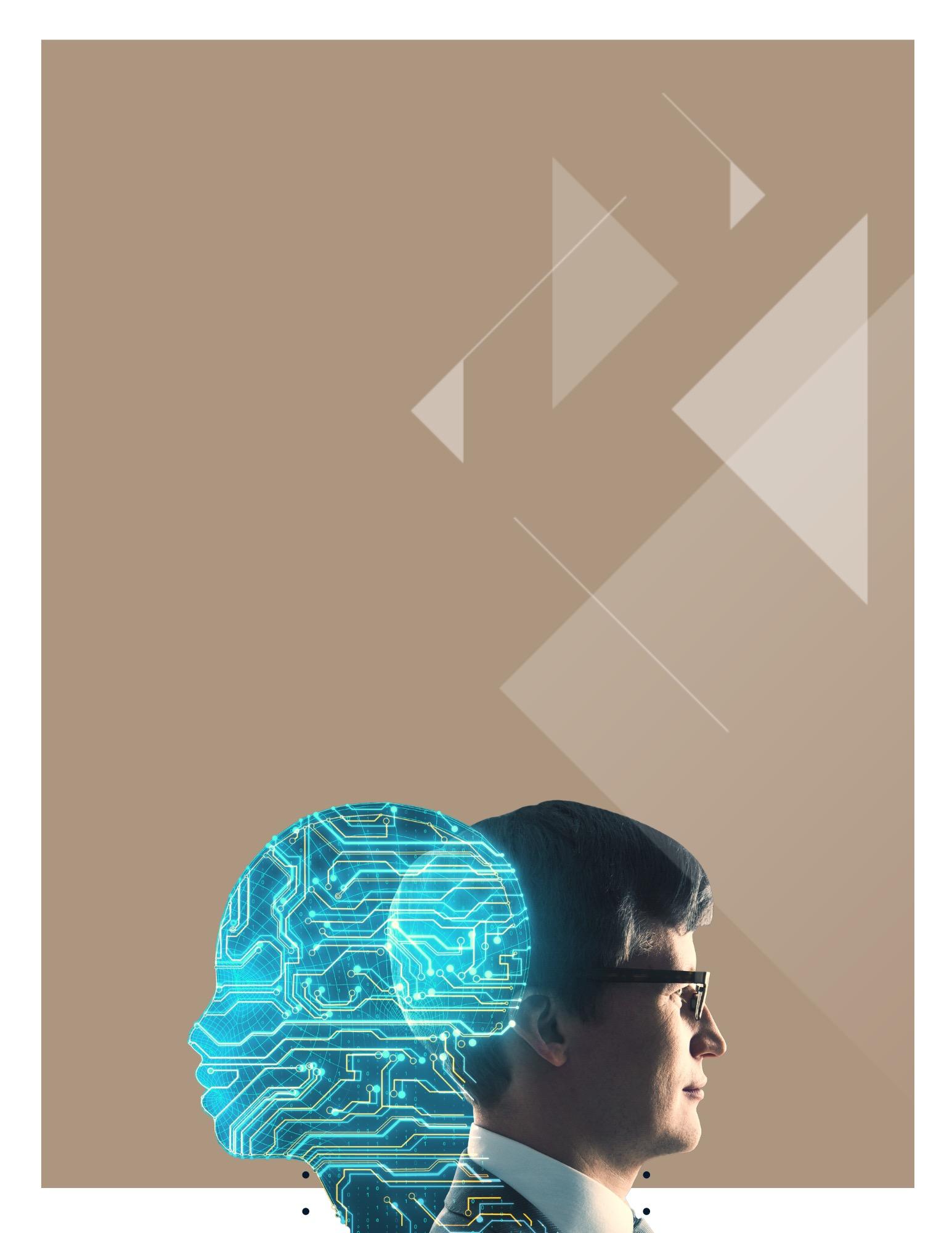

Finally, how can we provide ramps for any American to embark on the AI knowledge journey? Some have proposed ways to make AI training widely accessible by all in the Federal government (see ACT-IAC’s AI Federal Workforce Certification). 8 Finding, training, and keeping the next generation of AI workforce talent within the US will help build our AI workforce, thereby protecting our national AI competitive advantage. With this backdrop in mind, the solution to how the US can win the AI race becomes clearer.
Allies are critical to winning the AI race. From a pure numbers game, which country can match China’s over one billion people and speak English? The answer is, not surprisingly, India.
Additionally, imagine if the US included our European allies and Mexico? Strategic AI relationships built to have our partners overseas and nearshore will mark a significant step in augmenting the US in the AI Race.


97
The US should aggressively foster strategic AI relationships with its allies: India, Mexico, Canada, Ghana, and the European Union, to co-develop AI training, tools, and solutions and to co-host AI summits. Needless to say, no one will call a timeout while the US figures out what it wants to do, least of all China, which enjoys the strength, talent, and aspiration to challenge US technological leadership, military establishments, and global position, as evidenced by China’s citizen surveillance and social credit scoring systems.9.
Thus, one key to victory in the AI race is recognizing the benefits of establishing and nurturing alliances among state actors, industry, academia, and free societies. The ingredients for success currently exist, but they remain in urgent need of being further strengthened and coordinated. The AI race will not be won unless the US acts swiftly to cultivate and resource these synergies.

The time to strike first, strike hard, with no AI mercy, is now. To do that, we must first understand the spectrum of technologies and discipline that fall under the AI umbrella.

AI Goal – Computers that Mimic Human Intelligence
The AI ecosystem of fields facilitates several tools, such as Generative Adversarial Networks. Some compare AI’s field with building artificial animals or persons, or at least something similar. 10
While there is some contention regarding where to draw the outer boundaries around AI is still debated, but most agree that the nucleus of AI is to cause computers to mimic human intelligence. AI researchers since the 1950’s have been using the principles that are now known as “Machine Learning” well before they were integrated into the AI ecosystem. After decades of remaining idle, the more recent and exponential growth in the development and use of AI technology today is due to three key factors: (1) cheap computational power (e.g., GPUs) to run Machine Learning, (2) Deep Learning algorithms, and (3) heaps of Big Data, a.k.a. the Data Deluge, to churn through the models for training and validation purposes.

The keys to winning the AI Arms Race will be a sound grasp of the current AI ecosystem and use of AI tools to promote education and address misconceptions.
Educational efforts are especially critical to assemble diverse
groups of thought and opinions and create a culture of inclusivity. Diversity is essential because, while AI algorithms are superb at finding patterns within highdimensional vectors of data, and the map f(), AI cannot yet ascribe meaning to these maps. Academically trained humans are needed to be “in the loop” to create, monitor, and be held responsible for clarifying the value and importance of these AI tools. The following categories will help explain where AI is in its Capability Maturity Model (CMM):
1. Artificial Narrow Intelligence (ANI): Machines’ ability to accomplish specified tasks.


2. Artificial General Intelligence (AGI): Machines perform previously undefined general tasks.
3. Artificial Super Intelligence (ASI)/The Singularity: Machines have AGI capabilities and have achieved self-awareness.
Another reason for the urgent calls to invest in AI education is that the AI Arms Race cannot be won solely by the nation with the most advanced AI technology.
NSCAI’s publication Technical Talent in Government reports that “the Department of Defense (DoD) and the Intelligence Community (I.C.) both face an alarming talent deficit.11 This problem is the greatest impediment to the U.S. being AIready by 2025.” This AI talent deficit can only be addressed by aggressively recruiting, training, employing, and retaining the most technically savvy and diverse talent. Thus, our competitive advantage will largely be driven by our ability to identify, nurture, train, integrate, collaborate with, cultivate, and sustain the next generation of human capital technical talent.
Since we already see AI innovations across all industries, such as healthcare, education, finance, science, smart cities, and space, building an educated populace around this technology will enable us to move effectively to and govern AGI while vigilantly preventing ASI.
An ASI reality is the point at which the US could lose control of AI from technology outpacing and outgrowing what benefits humans. Better understanding AIrelated disciplines and research obviously includes a rudimentary understanding of the inherent dangers in poorly executed AI. Few other technologies for good can affects more catastrophic than poorly implemented AI.
Misguided View That AI Will Explicitly Marginalize People
To better understand AI requires us to examine how it shapes society through the lens of the Internet of Things (IoT). Items like wearable computers, smart refrigerators, digital helpers, and myriad other sensors integrate our personal data into the Internet. Our data is continuously being captured, monitored, and analyzed, and thereby perpetually fuels the next generations of AI and algorithms. This in turn is accelerating the pace of the AI Arms Race, often with little regards for how this process is being adequately vetted to prevent bias and other inaccuracies.
Society’s embrace of AI is no surprise, as researchers worked for the last sixty years, driven by the vision of more efficient decision-making machines. With the increase of computational power, AI tools' utility, sophistication, and prevalence have increased exponentially, but this progress also has a dark side. In 2009, the Nikon Corporation grappled with this issue when its AI-powered digital camera took a picture of an Asian person’s face and asked the photographer if the subject had blinked.


In 2015, Google suffered a very public outcry when it discovered that its facial recognition AI tool had mislabeled a black person as a gorilla.12
Although these respective companies have made efforts to address these biases in their AI technology, and other companies have taken these incidents to heart, many problems still exist, especially concerning the data used in AI training.

In 2014, Amazon developed an AI tool to automate the evaluation of job applications and identify optimal candidates. After a year of using this tool, Amazon realized that women were being excluded from hiring results due to the training data.
The training data used included technology job applications over the past 10 years, most of which were by men, leading the AI tool to exclude resumes including the word “women.” Amazon subsequently abandoned this AI-based application process in 2017.13 MIT researcher and founder of the Algorithmic Justice League Dr. J. Buolamwini highlighted the dangers of facial recognition AI bias.14
Considering the examples provided by Dr. J. Buolamwini of AI’s shortcomings in producing accurate or equitable results, we approach law enforcement applications of AI with wariness. Presently, within law enforcement, AI is most used for predictive policing and identification of demographics of likely offenders. 15

The Bureau of Justice compiled incarceration rates by demographic in October 2020; the results were stark, with White incarceration rates shown to be one-third of Hispanics and onefifth of Blacks.
Suppose these results are used as training data for predictive policing, without context or accounting for variables of extraneous circumstances. In that case, law enforcement will inevitably target minority males, which is, inarguably, unjust. What further diminishes the efficacy of crime prediction models is the law enforcement community’s lack of education in understanding its models.16
US educational systems must incorporate AI and critical thinking into its curricula, just as cybersecurity has been a recent addition.
As an example, in May 2017, the Trump administration, through the Executive Order on Strengthening the Cybersecurity of Federal Networks and Critical Infrastructure, tasked the Departments of Commerce and Homeland Security to submit a report on findings and recommendations to educate

103


and train the American cybersecurity workforce, including cybersecurity-related education curricula, training, and apprenticeship programs, from primary through higher education. 17 The Departments’ joint response outlined several recommendations for reskilling the existing workforce and aligning education and training to employers’ requirements. However, the Departments’ Educational proposals focused on collegiate-level education instead of elementary education. Similar challenges exist for the AI talent pool; more foundational education, ideally in elementary school, must occur to win the upcoming Arms Race in AI development and application. Gamification of critical thinking skills and logic construction facilitate early childhood learning which, in turn, should continue through secondary education. This also will optimize opportunities to cultivate interest in the STEM fields, with reduced anxiety that often accompanies these studies.
Furthermore, leveraging, expanding, and promoting existing programs, such as Scholarship for Service (SFS), will further incentivize pursuit of AI as a career choice. 18
Another cybersecurity lesson learned is the need to retrain the current workforce. The earlierreferenced executive order incentivized existing government employee volunteers to develop new skills by guaranteeing job placement in the cyber workforce, which should grow a strong AI workforce more quickly. With proper implementation and training, AI can and should help reliably execute decisions within design parameters.
However, concern still exists. Presently, the bias of the algorithm creator or environment ultimately encroaches into the AI, knowingly or unknowingly. “Real world” applications of AI involve some people or groups winning while others lose, as happens now with a person making decisions.


YEAR TOTAL FED. STATE MALE FEMALE WHITE BLACK HISPANIC 2009 504 61 443 952 67 245 1,544 694 2010 500 61 439 938 66 245 1,500 672 2011 492 63 429 932 65 240 1,447 660 2012 480 62 418 910 63 236 1,383 636 2013 479 61 418 907 65 236 1,354 626 2014 472 60 412 891 65 233 1,305 605 2015 459 56 403 866 64 228 1,247 586 2016 451 53 398 848 64 223 1,206 585 2017 442 51 391 833 64 221 1,169 569 2018 432 50 382 812 63 218 1,134 549 2019 419 48 371 789 61 214 1,096 525 PER 1000,000 PER 100,00 000 RESIDENTS WITHIN U.S. RESTIDENTS EACH DEMOGRAPHIC GROUP Figure. Sentenced prisoners under the jurisdiction of state or Federal correctional Authorities, by jurisdiction, sex, and race or ethnicity 2009-2019 15 107
We see this in the judicial system, workplace adjudication of conflict, and in other locations. However, some tasks should never be assigned to AI, and many believe that researchers should not only ask, “can we?” but also, “should we?” Ethics are a very personal set of beliefs, honed by the individual’s education and experience, and other factors such as religious faith, social community, and focus on assigned goals.


Leaving ethical decisions to AI will always include a bias and will always result in someone losing.
If this paradigm remains unchecked, then an uneducated, misguided, and ham-fisted application of AI in the US will, at best, result in the unequal distribution of AI’s benefits among the populace and, at worst, explicitly marginalize groups of people. Our adversaries welcome the opportunity to capitalize on our society’s resultant divisions and sow further division for political purposes. As seen in the 2016 US Presidential election, the selective presentation of information as “facts” distorted views of reality and quickly reinforced individuals’ confirmation bias. This example portends future problems if AI remains unharnessed and is considered a panacea for problems. However, AI, with its promise, comes with threats and problems difficult to predict, exasperated by invalid or incomplete data or inappropriate questions asked of the data.
AI Researchers Must Consider the Ethical Implications of Their Products
According to Merriam-Webster, ethics is “the discipline dealing with what is good and bad and with moral duty and obligation.” 19 The myriad tools of the AI ecosystem present a vast array of ethics issues, including everything from bias and fairness to safety and job losses and civil rights abuses. Resolving to win the AI race comprehensively will also require careful consideration of the ethical implications relating to AI technology before, not after implementation. Failure to do that means China very likely will fill the ethical vacuum with its own AI standards and ethical frameworks.

Among the questions AI policymakers should ask is how AI implementers can ensure the accuracy of the training data. How does AI technology account for missing data? What assumptions are baked into the AI model?
In other words, how does the creator’s own ethical framework influence these assumptions? Taking all of these together, what is the AI prediction quality?
Autocratic governments are less answerable to these questions than pluralistic, and democratic societies must be and care less about unfavorable outcomes for their people derived from AI solutions. Their priority is societal order, which they attain by suppressing free speech and open discourse. Such nations will not hesitate to use AI data to acculturate their population effectively, even if it is inaccurate.
Both politically and technologically, their aim is not to be broadly representative of the people they govern; it is to homogenize. Thus, technology will be used to enable such political-cultural homogenization.
All societies, which aim to be free and open while striving to provide equal access for all, can potentially benefit from optimally deployed AI. It also is incumbent on democratic societies to heed lessons learned from instances of misapplied AI to avoid disastrous results. One example was a report of police deploying a pre-cog-like AI causing sheriffs to arrive at homes before a predicted crime would occur. 20
Another example entailed AI researchers developing Real-Talk, using deep fake technology to replicate a person’s voice convincingly.
This AI technology will undoubtedly have nefarious applications in the information sphere. The anecdote demonstrates how the private sector excels in answering “Can we?” without first asking “Should we?” As a threshold matter, advancing AI technology should always include a threshold consideration as to (a) how the new technology could be misused and (b) what, if any, rudimentary guardrails are needed to minimize such misuse.

Put another way, AI innovators must consider the ethical implications of their products.
If their product can be used in a harmful manner, should it proceed to market?

Users must ask, what type of bias, and historical, measurement does this AI tech rely upon, and are we replicating bias society-wide by using it? As AI technology continues to permeate daily life, understanding how AI technology decisions are made is important. Simply because AI technology recommends a particular action, how can the user guarantee that the AI incorporated guiding principles such as proportionality and does no harm to safety and security? 21
No matter how sophisticated AI technology becomes in regard to statistical (or any other parameter of) accuracy, it can never substitute a user’s ethics.
This, and trusting technology efficacy, raise questions for leaders in open societies to answer and be held accountable.
Wholly apart from the technical experts and duly elected leaders, every American eligible to vote plays a role in responsibly bringing AI to market, implementing safe AI solutions, and understanding how the AI tools we use to enhance or detract from the just and equitable type of society we hold sacred.
Elements of DoD are already thinking about these questions and discussing the importance of creating AI tools with ethical considerations addressed on the front end. 22
This may require creators first to consider potential harm, precedent, setting into motion nefarious adversary responses, etc., and setting parameters contemplating when an AI solution may violate specific ethical parameters.

111
The Defense Innovation Board studied and released ethical considerations for DoD AI adoption, including the AI must be responsible, equitable, traceable, reliable, and governable. Given DoD’s immense buying power, each of these ethical principles will impact how AI creators build and market their products and how users interact with those products. Lastly, the US has a unique strength compared to its competitors: we are diverse, respect the enforcement of the rule of law, and value our open, flexible society.
An open, transparent society can evaluate evidence, absorb feedback, and make changes critically. It is an open system where information including ethical judgments is not closed off. That is not to say that our competitors have no ethical guidelines.
In a closed society, the regime does not receive critical feedback and insularly defines its own ethics and accountability. This arrangement for closed regimes works until it cannot absorb any more shocks, eventually collapsing. Incorporating unethical AI into their systems will hasten the fall of these closed regimes. If adequately implemented with ethical considerations for the US open system, it may lead to unforeseen prosperity vis-a-vis our competitors and a healthier political system.
AI’s Dual-Use Capabilities Provide Both Positive and Negative Potentials
“

If soldiers are not to cross international boundaries, goods must do so. Unless the shackles can be dropped from trade, bombs will be dropped from the sky.”23

The AI race is a product of a broader science and technology (S&T) rivalry between the US and China that is quickly developing into a technology war. 24 China’s ascendency in global economic power, its rapid technological growth, and the CCP Vision of Victory seek to position China as the world innovation leader and dominant force in emerging key technologies all combine to threaten US technological superiority. 25
The CCP’s restricted, centralized approach gives China an unprecedented advantage to expedite S&T policy creation, allowing state-owned enterprises (SOEs) and commercial sector businesses the unfair advantage of easy access to incentives and funding in opposition to the national security and foreign policy interests of the US.
In response to business initiatives taken by China, the US has
implemented counterbalancing measures through use of the Department of Commerce’s Entity Lists which targets Chinese digital technology companies. 26 This was done under the auspices of protecting US commercial interests, slowing the pace of China’s digital technologies development, and providing the US time to better develop its own S&T initiatives and AI strategies.
According to the US founding principles heavily influenced by the philosophers Sidney27 and Locke, 28 the US regards the development of AI in accordance with democratic principles: limited representative government, individual freedoms, private property, and authority derived from the electorate. Internationally, the US uses its economic and technological dominance to promote democracy, free markets, and the current international order. 29

113
China’s objectives, in contrast, are primarily to ensure the CCP’s regime survival. For the CCP, technological sovereignty is needed to grow a high-tech economy, modernize the PLA, and spread its commercial and geopolitical influence throughout the world. China aims to use AI to suppress individual liberties using surveillance, repressive controls, and predictive analytics. These are not conditions most Western democracies prefer to be subject to or live under.30
AI’s dual-use capabilities provide both far-reaching positives and negatives. AI’s commercial integrative capacity is expected to be an economic boom and the primary catalyst for the upcoming fourth industrial revolution with an additional global economic value more than $13 trillion by 2030. 31

International cooperation in an open-source environment can use AI to solve real-world problems such as food security, clean water, reliable and sustainable energy, affordable health care, and pollution mitigation. Therefore, competition between autocratic and democratic governments and their world views need not result in a zero-sum game.
States invariably take self-serving actions when they believe their survival is at stake, so AI will be integrated almost certainly into military weapons systems, intelligence collection, and other uses deemed essential. The US and partner nations must account for AI’s dual-use capabilities representing threats to economic and national security interests. Measures need to be taken following the NSTC AI R&D Strategic Plan and the NSCAI Final Report.32 , 33
Primary recommendations include dedicating funding for long-term AI investment, developing safe and dependable AI systems, strengthening military-academia-industrial complex collaborations, hardening US cybersecurity, and governing the integration of AI into national security interests. These strategies and recommendations should be the foundation that ensures the US will remain the AI technology leader. We win by taking bold, transparent actions for the collective good, to lift the human condition by providing “responsible, equitable, traceable, reliable, and governable” AI. 34 At the same time we must protect US technological supremacy, intellectual property, technology transfers, and national security.35 To remain a shining beacon of ethics and humanity, the US must continue to champion humans-inthe-loop and systems free of ignorance and bigotry while preserving and embodying the liberties and values of a free society.

The US can win the AI race..
115
CONCLUSION
If, having read this article, you find yourself more curious about and invested in the US winning the AI Arms Race, then there is legitimate hope that this race can be won with our democratic principles intact. The odds of the US establishing itself not only as the leader of the free world but also as a leader of the development and use of AI in pushing human progress forward for citizens the world over grow as more Americans recognize this to be an all-hands-on-deck situation. To prevail over the competition will require national resolve and all of us going all-in to win this AI race. Doing this will undoubtedly build the necessary momentum to get the US to the next stage of ramping up a national AI strategy, including immediate and significant government including immediate and significant government investments with more robust partnerships across the spectrum, particularly with academia, private industry, and our allies.
Equally important, our national AI strategy must be girded on the foundation of education and training, which will require dramatic realignment of education to our technology goals, perhaps even using AI learning tools themselves, to include customized instruction for each learner. Moreover, the access to AI education and training must be equitable for everyone to ensure that AI tools going forward minimize biases.
As the US stands at this critical juncture, let it make the bold choices that will allow the nation, decades from now, to look back proudly. As with all the challenges that the US has faced before and will face in the future, it wins this AI Arms Race by applying America’s unique combination of ambition, talent, rigor, diversity, the highest level of ethical standards, transparency, and ingenuity. And when the world notes that the US won this difficult AI race, it also will note that it is the US that continues to protect the inalienable rights of life, liberty, and the pursuit of happiness for all.

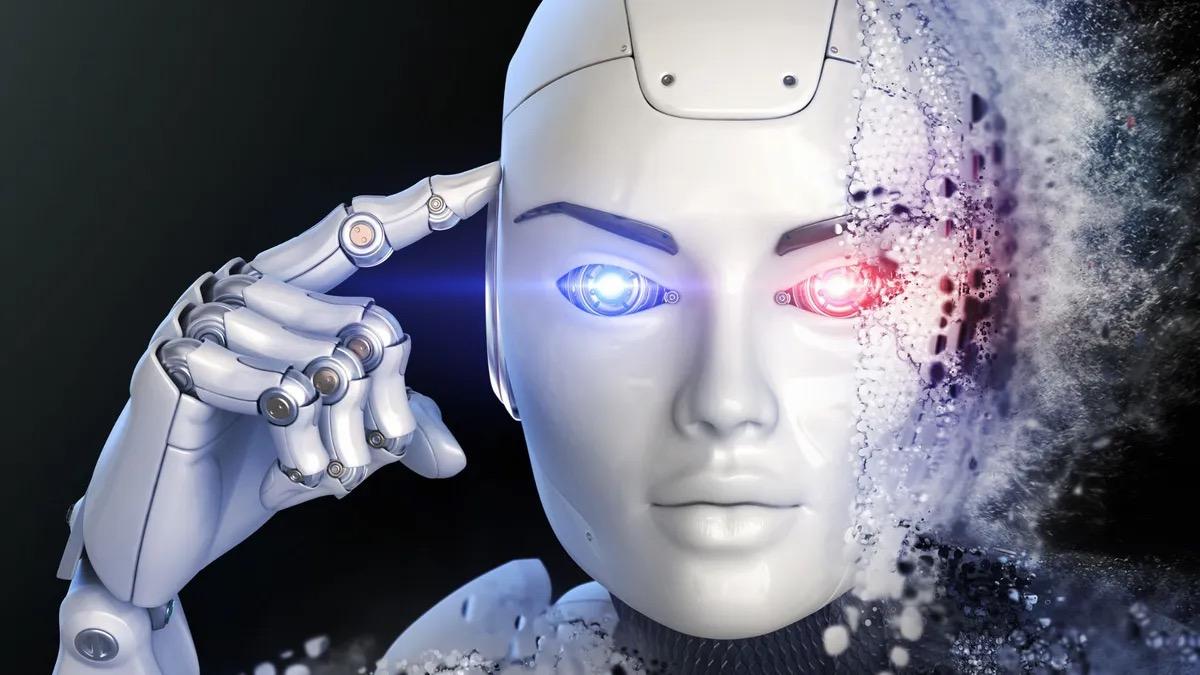
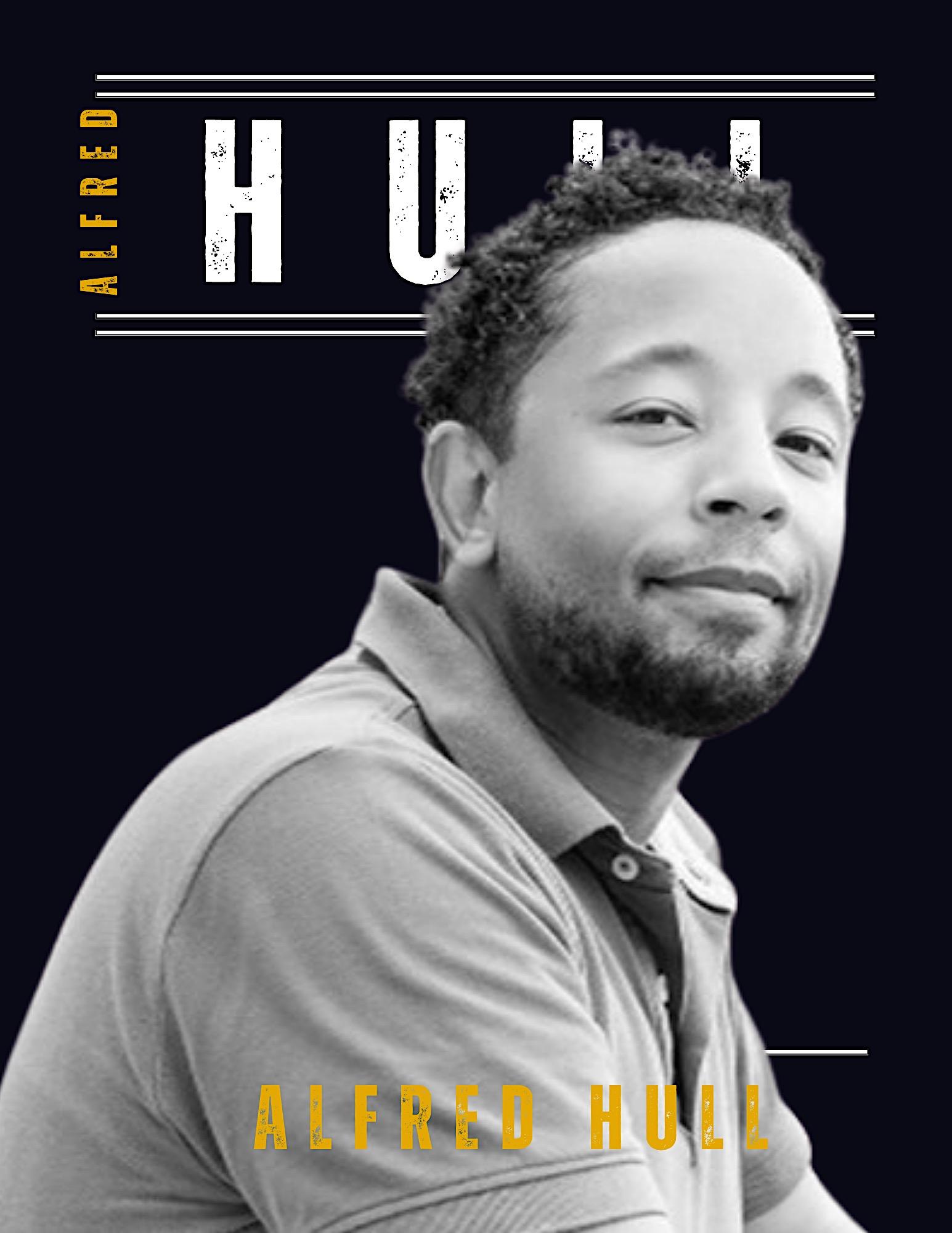
ALFRED HULL
is the

HQDA Data Policy & Governance Branch Chief/Senior Data Scientist, and previously led Artificial Intelligence & Machine Learning efforts for the Navy Program Executive Office Manpower, Logistics, and Business Solutions. He earlier led Data Science, Engineering, and Systems Development & Sustainment teams at Naval Information Warfare Command, supporting PMW150: Business Management Systems Portfolio.
He spent seven years in fortune 500 companies doing Operations Research and Decision Science work at Amazon.com, Target Corporation, and Dollar Tree Corporate Headquarters. Alfred holds an MBA from George Washington University and two undergraduate degrees in Decision Science and Maritime & Supply Chain Management from Old Dominion University.
119
DR. JIM KYUNG-SOO LIEW
Dr. Jim Kyung-Soo Liew is President and Founder of SoKat.com, and Associate Professor of Finance at Johns Hopkins Carey Business School. He has published pioneering research at the intersection of social media and big data, cryptos/blockchain, and financial markets. He currently teaches Big Data and Artificial Intelligence: Extracting Business Value, Crypto-Currencies and Blockchain, and Leading Entrepreneurship and Innovation at the Johns Hopkins Carey Business School. He also serves as ACT-IAC's CoChair of the AI Curriculum Committee and Chair of the Data Readiness for AI Committee.



KRIS PALAORO
Mr. Kris Palaoro is a NAVWAR systems engineer who works across engineering and logistics, focusing in data engineering and analytics on the ADVANA Jupiter platform. He holds an MBA with a concentration in finance, an MS in International Relations with a concentration in national security affairs, an ME in systems engineering, and four other undergraduate degrees. He is DAWIA level 3 in engineering, level 3 in logistics, level 2 in program management, and is certified as a PMP and CSWF advanced master.

Bio
DR. MARK GRZEGORZEWSKI
Dr. Mark Grzegorzewski is Resident Senior Fellow in the Department of Strategic Intelligence and Emerging Technology at Joint Special Operations University. His publications include: " Technology Adoption in Unconventional Warfare”, and he authored the chapter: “Why Silicon Valley is a Poorly Suited Model for SOF” in the “Big Data for Generals ... and Everyone Else over 40.” He also recently published with the Modern War Institute on “Incorporating the Cyberspace Domain: How Russia And China Exploit Asymmetric Advantages in Great Power Competition.”
DR. MICHAEL KLIPSTEIN


Dr. Michael Klipstein has worked on national cyber topics for over a decade, ranging from USCYBERCOM continuity of government networks, the National Security Agency hard targets, leading a Cyber National Mission Team, and building two Nation Cyber Protection Teams. He taught at Columbia University, created curricula for the Joint Staff for international partner nations in cyberspace, and served as Director of International Cybersecurity Policy for the National Security Council.

Bio 121
DR. PABLO BREUER

BioDr. Pablo Breuer is a non-resident senior fellow of the Atlantic Council's GeoTech Center and twentytwo-year veteran of the U.S. Navy with tours including military director of U.S. Special Operations Command Donovan Group and senior military advisor and innovation officer to SOFWERX, the National Security Agency, and U.S. Cyber Command as well as serving as Director of C4 at U.S. Naval Forces Central Command. A DoD Cyber Cup and Defcon Black Badge winner, he has served as faculty at the Naval Postgraduate School, National University, California State University Monterey Bay, and was a Visiting Scientist at Carnegie Mellon CERT/SEI. Pablo is also a cofounder of the Cognitive Security Collaborative and coauthor of the Adversarial Misinformation and Influence Tactics and Techniques (AMITT) framework.
DR. MICHAEL SPENCER

Dr. Michael Spencer is the founder and a Board of Director for the Halcyon Institute, a technology-based research and policy analysis think tank dedicated to the development and integration of dual use digital technologies such as AI, big data, cloud networks, 5G, ICT, cybersecurity, advanced semiconductors, quantum computing, IOT, etc. He is also currently an adjunct professor at Saint Leo University where he teaches courses in Democracy, Democratic Institutions, and Historical Immigration.

NOTES

1. M. McFarland, October 24, 2014, Elon Musk: “With artificial intelligence we are summoning the demon.” The Washington Post, https://www.washingtonpost.com/news/innovations/wp/2014/10/24/elon-muskwith-artificial-intelligence-we-are-summoning-the-demon/.
2. Sanchita Dash, “Elon Musk and Jack Ma Fight about AI and Mars, but Agree That ‘Love Is the Answer,’” Business Insider, August 29, 2019, www.businessinsider.in/elon-musk-and-jack-ma-fight-about-ai-and-mars-butagree-that-love-is-theanswer/articleshow/70892426.cms, accessed February 5, 2022.
3. Will Heaven, “OpenAI’s New Language Generator GPT-3 Is Shockingly Good— and Completely Mindless,” MIT Technology Review, July 20, 2020, www.technologyreview.com/2020/07/20/1005454/openai-machine-learninglanguage-generator-gpt-3-nlp/.
4. A. Lee, August 9, 2020, What is China’s social credit system and why is it controversial? South China Morning Post, https:// www.scmp.com/economy/china-economy/article/3096090/what-chinas-socialcredit-system-and-why-it-controversial.
5. National Commission on AI, “NSCAI Submits First Quarter Recommendations to Congress,” NSCAI, April 1, 2020, www. nscai.gov/2020/04/01/nscai-submitsfirst-quarter-recommendations-to-congress2/#:~:text=NSCAI%20recommended%20steps%20to%3A%20increase%20funding %20for%20non-defense, accessed February 5, 2022.
6. Dr. Lee, K.-F. (2021), Founder - Sinovation Ventures, Sinovationventures.com, https://sinovationventures.com/index.php/ home/aboutus/teams.html
7. Proposal of the Central Committee of the Chinese Communist Party on Drawing Up the 14 th Five-Year Plan for National Economic and Social Development and Long-Range Objectives for 2030, December 2, 2020, Center for Security and Emerging Technology, https://cset.georgetown.edu/research/proposal-of-the-central-committee-of-thechinese-communist-party-on-drawing-up-the-14th-five-year-plan- for-nationaleconomic-and-social-development-and-long-range-objectives-for-2030/.
123
8. ACT-IAC AI Working Group, 2020, ARTIFICIAL INTELLIGENCE FEDERAL WORKFORCE CERTIFICATION EMERGING TECHNOLOGY COMMUNITY OF INTEREST Artificial Intelligence Working Group, In ACT-IAC Accelerating Government, https://www.actiac.org/system/files/AI%20Knowledge%20Certification_2.pdf.
9. A. Lee, August 9, 2020, What is China’s social credit system and why is it controversial? South China Morning Post, https://www.scmp.com/economy/china-economy/article/3096090/what-chinassocial-credit-system-and-why-it-controversial.
10. S. Bringsjord and N.S. Govindarajulu, 2018, Artificial Intelligence, Stanford Encyclopedia of Philosophy, Stanford University, https://plato.stanford.edu/entries/artificial-intelligence/.

11. E. Schmidt, R. Work, C. Catz, E. Horvitz, S. Chien, A. Jassy, M. Clyburn, G. Louie, C. Darby, W. Mark, K. Ford, J. Matheny, M. Griffiths, K. McFarland, and A. Moore, 2021, Final Report National Security Commission on Artificial Intelligence, https://www.nscai.gov/wpcontent/uploads/2021/03/Full-Report-Digital-1.pdf.
12. Vincent, James, “Google ‘Fixed’ Its Racist Algorithm by Removing Gorillas from Its Image-Labeling Tech,” The Verge, The Verge, January 12, 2018, www.theverge.com/2018/1/12/16882408/google-racist-gorillas-photo-recognitionalgorithm-ai.
13. J. Dastin, October 10, 2018, Amazon scraps secret AI recruiting tool that showed bias against women, Reuters, https:// www.reuters.com/article/usamazon-com-jobs-automation-insight-idUSKCN1MK08G.
14. J. Buolamwini, T. Gebru, S. Friedler, and C. Wilson, 2018, Gender Shades: Intersectional Accuracy Disparities in Commercial Gender Classification, Proceedings of Machine Learning Research, 81, 1-15, http://proceedings.mlr.press/v81/buolamwini18a/buolamwini18a.pdf.
15. Bureau of Justice Statistics, Report title: Prisoners in 2019 NCJ 255115, October 22, 2020, accessed March 3, 2021, https:// www.bjs.gov/index.cfm?ty=tp&tid=1.
16. C. O’Neil, WEAPONS OF MATH DESTRUCTION: How big data increases inequality and threatens democracy, New York: Broadway Books, 2017.
17. Executive Office of the President, May 16, 2017, Strengthening the Cybersecurity of Federal Networks and Critical Infrastructure, Federal Register, https://www.federalregister.gov/documents/2017/05/16/201710004/strengthening-the-cybersecurity-of-federal-networks-and-criticalinfrastructure.
18. CyberCorps. (n.d.). SFS. Www.sfs.opm.gov, retrieved February 5, 2022, https://www.sfs.opm.gov/

19. Merriam-Webster, 2019, Definition of ETHIC, https://www.merriamwebster.com/dictionary/ethic.
20. K. McGrory and N. Bedi, September 3, 2020, Target, Tampa Bay Times, https://projects.tampabay.com/projects/2020/ investigations/police-pascosheriff-targeted/intelligence-led-policing/.
21. United Nations Educational, Scientific and Cultural Organization, November 24, 2021, Recommendation on the Ethics of Artificial Intelligence, https://unesdoc.unesco.org/ark:/48223/pf0000380455.
22. J. Barnett, November 17, 2021, DOD organizations plot implementation of ethical AI in new guidance, Fedscoop, https:// www.fedscoop.com/diu-ai-ethicsguidance-for-contractors/.
23. Otto Mallery, “Economic Union and Enduring Peace,” Annals 216 (July 1941): 125-126.
24. David Lynch, “How the U.S.-China Trade War Became a Conflict over the Future of Tech,” The Washington Post: Business, May 22, 2019, accessed November 24, 2019; Gavekal Research, “What’s Really at Stake in the US-China Rivalry,” Gavekal, May 9, 2018, http://web.gavekal.com/article/whats- reallystake-us-china-rivalry; Elsa Kania, “Innovation in the New Era of Chinese Military Power: What to Make of The New Chinese Defense White Paper, The First Since 2015,” The Diplomat, July 25, 2019, accessed October 13, 2019, https://thediplomat.com/2019/07/innovation-in-the-new-era-ofchinese- militarypower/.
125
25. Gavekal Research, “What’s Really at Stake in the US-China Rivalry.”
26. R. Ashooh, 2019, Addition of Entities to the Entity List and Revision of an Entry on the Entity List. In Department of Commerce. Bureau of Industry and Security, https://s3.amazonaws.com/public-inspection.federalregister.gov/201913245.pdf.
27. Discourses concerning government by Sidney, Algernon, 1622-1683; John Adams Library (Boston Public Library), BRL; Filmer, Robert, Sir, d. 1653; Sidney, Algernon, 1622-1683; Adams, John, 1735-1826, former owner. 28. Locke’s Two Treatises on Government and Essay Concerning Human Understanding.

29. Elsa Kania, “Innovation in the New Era of Chinese Military Power: What to Make of The New Chinese Defense White Paper, The First Since 2015,” The Diplomat, July 25, 2019, accessed October 13, 2019.
30. Schmidt, Work, Catz, Horvitz, Chien, Jassy, Clyburn, Louie, Darby, Mark, Ford, Matheny, Griffiths, McFarland, and Moore, Final Report National Security Commission on Artificial Intelligence. 31. J. Bughin, J. Seong, J. Manyika, M. Chui, and R. Joshi, 2019, https://www.mckinsey.com/~/media/McKinsey/Featured%20Insights/Artificial% 20Intelligence/Notes%20from%20the%20frontier%20Modeling%20the%20impac t%20 of%20AI%20on%20the%20world%20economy/MGI-Notes-from-the-AIfrontier-Modeling-the-impact-of-AI-on-theworld-economy-September-2018.ashx.
32. NSTC, 2019, “The National Artificial Intelligence Research and Development Strategic Plan: 2019 Update.” Whitehouse. gov., National Science and Technology Council: Select Committee on Artificial Intelligence, June 2019, accessed January 22, 2020, 1-42. https://trumpwhitehouse.archives.gov/wp-content/uploads/2019/06/National-AIResearch-and-Development-Strategic-Plan-2019-Update-June- 2019.pdf.
33. Schmidt, Work, Catz, Horvitz, Chien, Jassy, Clyburn, Louie, Darby, Mark, Ford, Matheny, Griffiths, McFarland, Moore, Final Report: National Security Commission on Artificial Intelligence.

34. JAIC Public Affairs, 2021. “AI Ethical Principles – Highlighting the Progress and Future of Responsible AI in the DoD”. AI in Defense. March 26, 2021, accessed March 12, 2021. https://www.ai.mil/blog_02_26_21ai_ethics_principleshighlighting_the_progress_and_future_of_responsible_ai.html.

35. Gavekal Research, “What’s Really at Stake in the US-China Rivalry.”

127


Country ranks 11th out of 190 economies in World Bank's ease of doing business list
The Emirates is the highest ranking economy in the Middle East and North Africa, and joins the World Bank’s top 20 ranking out of 190 economies.
UAE jumps 10 places in World Bank's ease of doing business list.

Key economic sectors in the UAE are witnessing a steady growth in the flow of investments, and several national companies are entering into partnerships with foreign firms.
The country seeks to attract further investments into promising sectors such as advanced technology, artificial intelligence, research and development, and digital economy, which stimulate innovation and improve the performance of the economy.

GLOBAL INVESTMENT HUB UAE A PROMISING
UAE BOASTS FIRST-CLASS INVESTMENT ENVIRONMENT AND INTEGRATED LOGISTICAL INFRASTRUCTURE.
Amb. Dunston P
Chief Executive Officer to the Royal Office of HH Sheikh Ahmed Bin Faisal Al Qassimi

Sheikh Mohammed Bin Rashid Al Maktoum marks 17 years as visionary ruler of Dubai. Under his 17 years of rule, since 4th January 2006, HH Sheikh Mohammed who is also the Vice President and Prime Minister of UAE, has turned Dubai into a global centre of tourism, finance, and commerce.
A remarkable feat, considering that just a few decades earlier, Dubai was still a small town centred on the Creek.
During this time, HH Mohamed oversaw the development of the Burj Al Arab, which opened in September 1999. It was a hotel that introduced Dubai to the world and remains an iconic feature of the skyline. HH Mohamed is also dedicated to helping those most in need. In 2003, HH Sheikh Mohammed established the International Humanitarian City, which is now
which is now an important global logistics hub for humanitarian aid.

Burj Khalifa, the world's tallest building, opened in 2010. Other major projects such as, Dubai Marina, Dubai Metro and shopping centres such as Dubai Mall and Mall of the Emirates and Museum of the Future elevated Dubai even more.

133
A Regional Hub for Global Companies
More recently, HH Sheikh Mohammed ensured Dubai recovered from Covid-19 faster than most countries and also oversaw the safe and successful staging of Expo 2020 Dubai which attracted people from across the globe. From the small town HH Sheikh Mohammed was born in, Dubai's population

is now about 3.5 million today with people from across the world seeking to live and work in the UAE.
And it already looks like a busy year for 2023. HH Sheikh Mohammed on January 2, set out the UAE's five key priorities for the year during the

UNITED ARAB EMIRATES
first Cabinet meeting of 2023. He said the UAE would focus on consolidating its national identity; championing the environment and sustainability; developing the education sector; boosting Emiratisation policies; and expanding economic partnerships across the globe.
It is a particularly important year for the environment. The Expo site, now known as Expo City Dubai, will host a major UN climate summit.
The Private Office of HH Sheikh Ahmed Bin Faisal Al-Qassimi for Strategic Alliances and Policies joins the nation in congratulating HH Sheikh Mohammed Bin Rashid Al Maktoum for all these achievements and wishing him good health and support for many more achievements in the future.
Dubai a country of wonders!
Dubai is One of the most multicultural, beautiful, and prosperous cities in the world.
Dubai boasts stunning historical sights, futuristic architecture, state-of-the-art infrastructure, cultural diversity, a fast-growing economy, and a great leadership with a clear vision. Below are some key facts about Dubai you should know:
• Attracts 15.93 million annual visitors.

• A gateway connecting 2.4 billion consumers across the Middle East, the Indian Subcontinent, and East Africa.

• The world’s top city for visitor spending, amounting to $30.8 billion.
• 100% repatriation of capital investment and total profit earned.
• 100% foreign business ownership allowed.
• Attractive Tax benefits.
• A conducive atmosphere for business owners.
UNITED ARAB EMIRATES WHY INVEST IN DUBAI? A DETAILED SUMMARY ON WHY AND HOW. 135



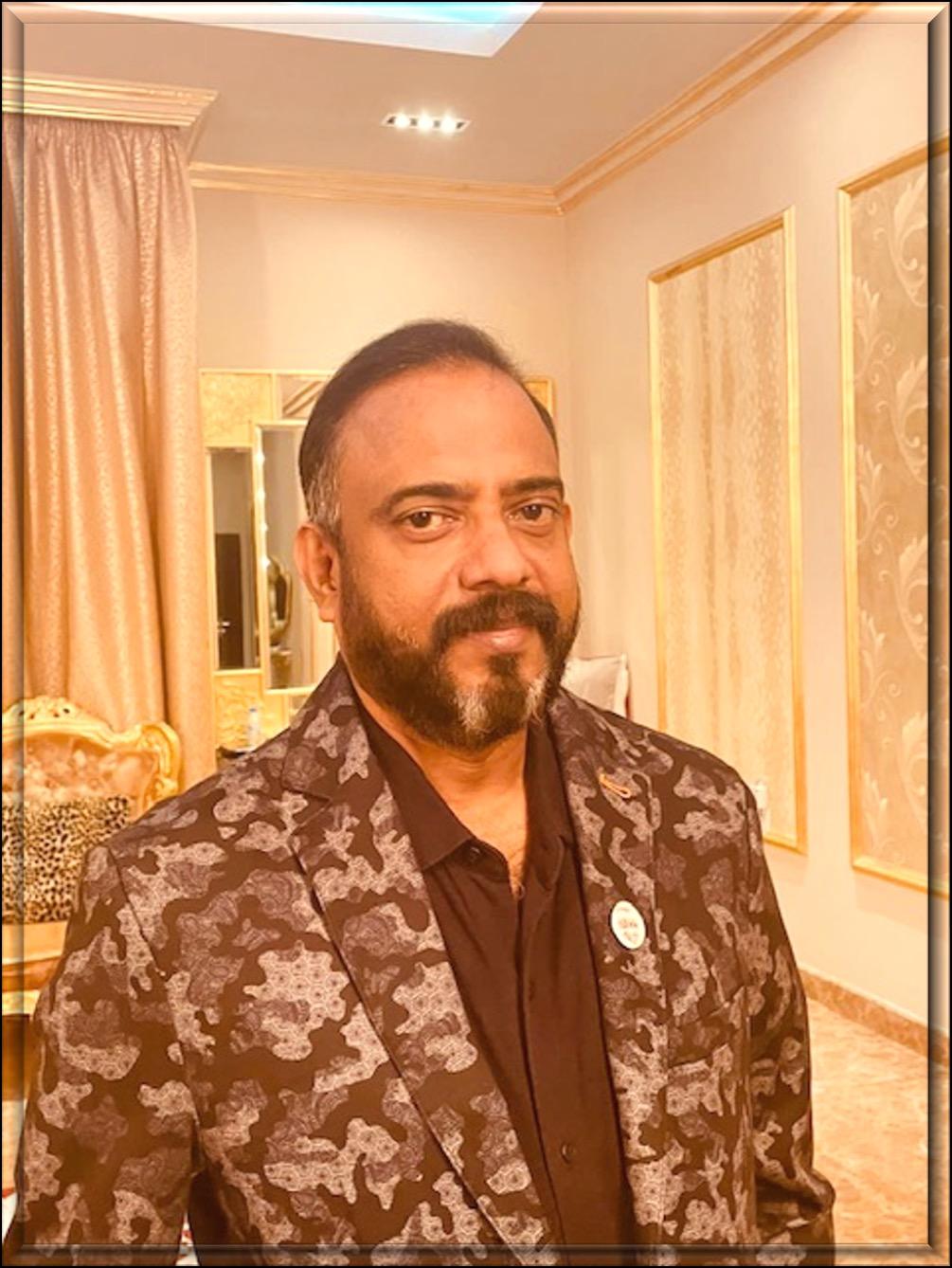






About Dubai
One of the most popular tourist and business destinations in the world, Dubai offers world-class attractions and an enviable multicultural lifestyle that cannot be found in any other part of the world. With its world-famous monuments like the Burj Khalifa, Dubai has been ranked as the city with the best infrastructure and quality of living in the entire Middle East.
Despite the huge influx of tourism, it remains one of the safest cities in the world especially after the Covid- 19. The city is known for attracting talent from all over the world and is home to several multinational Fortune 500 companies. It is also strategically and geographically placed so that it connects well with all across the globe.
9 reasons why you must invest in Dubai
Known for the tallest buildings in the world, the record-breaking statistics and the omnipresent opulence, Dubai is one of the most attractive places
to invest. Geared towards tremendous economic growth, Dubai is set to thrive in the coming years attracting global talent, increased amounts of Foreign Direct Investment and even more impressive projects which are in the offing.
We have gathered, the top 9 reasons why Dubai makes an excellent place for investment opportunity.
11. Low taxes
Dubai has no property tax, or capital gains tax, making the Emirate the best place to invest. Once a property is purchased, owners will not pay additional taxes in the future only the one-off real estate transaction fee. And for business entities the tax structure is either nil in the free zone and 5% in the mainland which is the best in the world.
2. Outstanding financial rewards
Dubai has the 5th highest performing economy in the world. The government is dedicated to making the Emirate competitive
UNITED ARAB EMIRATES

across the globe by constantly introducing new measures to improve the business environment and promote long-term growth.
Individuals who are investing in Dubai property enjoy very attractive benefits. With unlimited remittance limit and a very stable currency, pegged to the dollar, Dubai is offering unparalleled financial security. Investors prefer Dubai because it’s developing quickly to a solid investment choice, with easy exit and a guaranteed 10-year golden visa in many cases.
3. High return on investment
Dubai recently reached the top of the “Hybrid” Cities for real estate investment in JLL’s report titled ‘World Cities: Mapping the Pathways to Success’.
Based on the report, ‘Hybrid’ cities are best epitomised by Dubai. Those cities are usually mediumsized and compete in specialised markets while they benefit from access to large domestic markets. Dubai’s spot on the map and its definite luxury status exhibit the
durability and top position of the city on real estate worldwide.
Dubai ranks between the world’s ‘emerging cities’ and ‘new world cities’ as a city with a superior liveability compared to other national and regional nominees.
Buy-to-let investors in Dubai can achieve higher rental yields compared to other mature property markets, despite the apparent slow down of the market. For many, the real estate market in Dubai is undergoing a ‘correction’ process that will see a more stable and solid supply of high-quality homes in the near future.
4. Strong Infrastructure
Dubai is all set to gear towards a smart recovery from the beginning of 2021, due to investors’ unshakable confidence in Dubai and its promising support to business development.
UNITED ARAB EMIRATES

4 3
139


The government fully believes that Dubai’s impressive leadership is one of its major strengths. Dubai is one of those cities that provide exceptionally well infrastructure and high standard of living that continues to advance as years goes by.
Dubai has one of the largest, tallest and swankiest buildings in the world including Burj Khalifa and the most attractive man-made island. Dubai international airport claims to be one of the busiest airports in the world, in terms of international passenger traffic. When it comes to seaports, Jabel Ali Port is the world’s largest man-made port. These reasons are enough for any savvy investors to understand why to invest in Dubai.
5. Dubai Expo 2020 Expo 2020, billed as one of the largest events to be held in Dubai, was a huge event that saw 191 countries participating showcasing their traditions, business goals and culture. It was organized in such a great manner that saw more than 4 million people visiting the Expo
in spite of the covid restrictions that prevailed.
It shows Dubai’s commitment to economic growth through massive opportunities for potential entrepreneurs and investors. Since its inception, Expo 2020 Dubai has been committed to harnessing cutting-edge technology to provide visitors with an enriched experience, both onsite and wherever they may be in the world.
And the huge success of the EXPO 2020 resulted in the economy surging to great levels which is a promising factor for the business community. And it also has paved way to retain some of the major highlights of the expo as it is and to develop the entire EXPO site into the Expo City project which will be a residential and commercial community called the ’15-minute city’ eventually.
6.

Exceptional hospitality
According to Dubai’s Department of Tourism & Commerce Marketing (Dubai Tourism), Dubai received 16.73 million international overnight visitors in in 2019. By 2020, Dubai
UNITED ARAB EMIRATES
6
5
expected more than 20 million visitors, with the financial plan to spend $56 billion by 2022. However, Covid-19 affected everyone’s plans and so did it disrupt the tourism industry everywhere. Dubai has started welcoming international guests in large numbers in 2022 and is likely to touch a 30 million plus visitors.
Do you know that 7/10 of the world’s tallest hotels are located in Dubai? Dubai is a global destination, attracting high-networth individuals looking for unique experiences. Catered to those with eclectic tastes, Dubai is a retreat of the connoisseurs with avenues to reveal the vibrant highlife and food that tantalizes the taste buds and with cuisines across the world.
7. The business hub of the Middle East
Dubai is a true axis of international trade, a gateway to the Middle East, the Indian Subcontinent and Central Asia. Home to ⅓ of Fortune’s Top 500 Companies, Dubai attracts business talents from every part of the world.
Dubai also belongs on the list of the world’s Top 20 Cities Global Power Index 2020 (GPCI).
Rightfully gaining momentum, the Emirate is offering an excellent legal framework for business to grow and a free enterprise system. Business leaders view Dubai as the untapped area where tremendous growth is set to happen.
8. A shopping paradise
8Dubai hosts some of the largest malls in the world, featuring the latest trends attracting shopping experiences from across the globe. Ranked as the most important international shopping destination globally, Dubai stole the show in the 2018 edition of ‘How Global is the Business of Retail?’
7Hosting currently the largest shopping mall in the world, the Dubai Mall, the Emirate is expected to add more than 1.5 million sq. m. of new retail space. Dubai also scores high when it comes to new market entrants as last year it welcomed 57 new retail brands from which more than half of them were European brand names mostly from the Coffee and Restaurant category.
UNITED ARAB EMIRATES

143

Some of the top sectors to invest in Dubai are Real estate, healthcare, travel and tourism, trading etc.
We at the private office of HH SHEIKH AHMED BIN FAISAL AL QASSIMI is determined to support business entrepreneurs who wants to establish themselves in this beautiful land and we are always there to help you out with a single window platform for multiple activities.
9. Dubai Land of Wonders
9Dubai which is known for its opulence and grandeur is arguably without a doubt the only country that can perhaps boast of being a transcendence city. Everything is indeed larger than life right from its lifestyle to various other businesses.
Dubai is noted to be the gateway of the world’s most developed markets, which includes Africa, India and China. It is also positioned geographically between east and west making it a hub of endless possibilities.
If you’re looking into starting a business that requires a lot of manpower then there is no place that can offer you the multi diverse skill and support than its huge population of working expats and also growing number of people looking into jobs etc., in this country.
UNITED ARAB EMIRATES

145

DUNSTON PEREIRA
Chief Operating Officer to the Royal Office of HH Sheikh Ahmed Bin Faisal Al Qassimi.
Recipient Nelson Mandela Noble Peace Award, CEO Award of the Year
Top 50 impactful influencers on LinkedIn
Chairman for Hope Ambassadors for GCC
Deputy chairman for Global Cancer Mission Ambassador for Goodwill Foundation
Track record in Manufacturing Materials Management, Global Sourcing, Lean Process, Cost Matrix, Data Analytics, Supplier Development, Supply Chain Management, Procurement and Logistics, Operations Management, Sales and Marketing, HR with blue-chip companies in India.
Major economic development projects in UAE include the Sports City, Wild Life Sanctuary, Underwater Theme Park, and Pharma City.
Movie industry versatile acting, coproduction planning and execution, and connectivity to Indian and Hollywood cinemas.
Ambassador for SLIOC Ambassador for Melano foundation Ambassador for Amuno foundations Member of the AIRO foundation International advisor for United Youth Guild Ambassador business relationship for the Kingdom of Nuimi
Member Leaders Without Borders Board member Women’s Reformation Organization Board Advisor Global Mental Health Association International advisor to the World Youth Council International advisor to the World Sports Association

147

In 2015, China's took the world by surprise when it announced a devaluation of its currency, the Yun by 3%. This move sent shockwaves throughout global financial markets and put China in a league of its own as an economic and political powerhouse. The reason for the devaluation was to boost exports and stimulate growth, but it also had the effect of making China's currency more attractive to international investors. The Devaluation of the Chinese Yuan was a Masterstroke of financial policy that has made China untouchable and industrious. By making their currency more attractive to investors, they were able to bring in more foreign investment which helped to stimulate their economy.
In addition, the lower value of the Yuan made Chinese exports more competitive on the global market. This helped to boost growth and create jobs in China, which in turn, made China’s economy even more robust. It also meant that foreign countries’ interests and Chinese interests are interwoven in investments in China. The other benefit of the Devaluation of the Chinese Yuan was ensuring Chinese Consumers only afford local made goods due to the expensive exchange rates and devalued Yuan. This in itself resulted in spurring a thriving local industry for the Chinese market creating more Chinese jobs, products and knowhow.
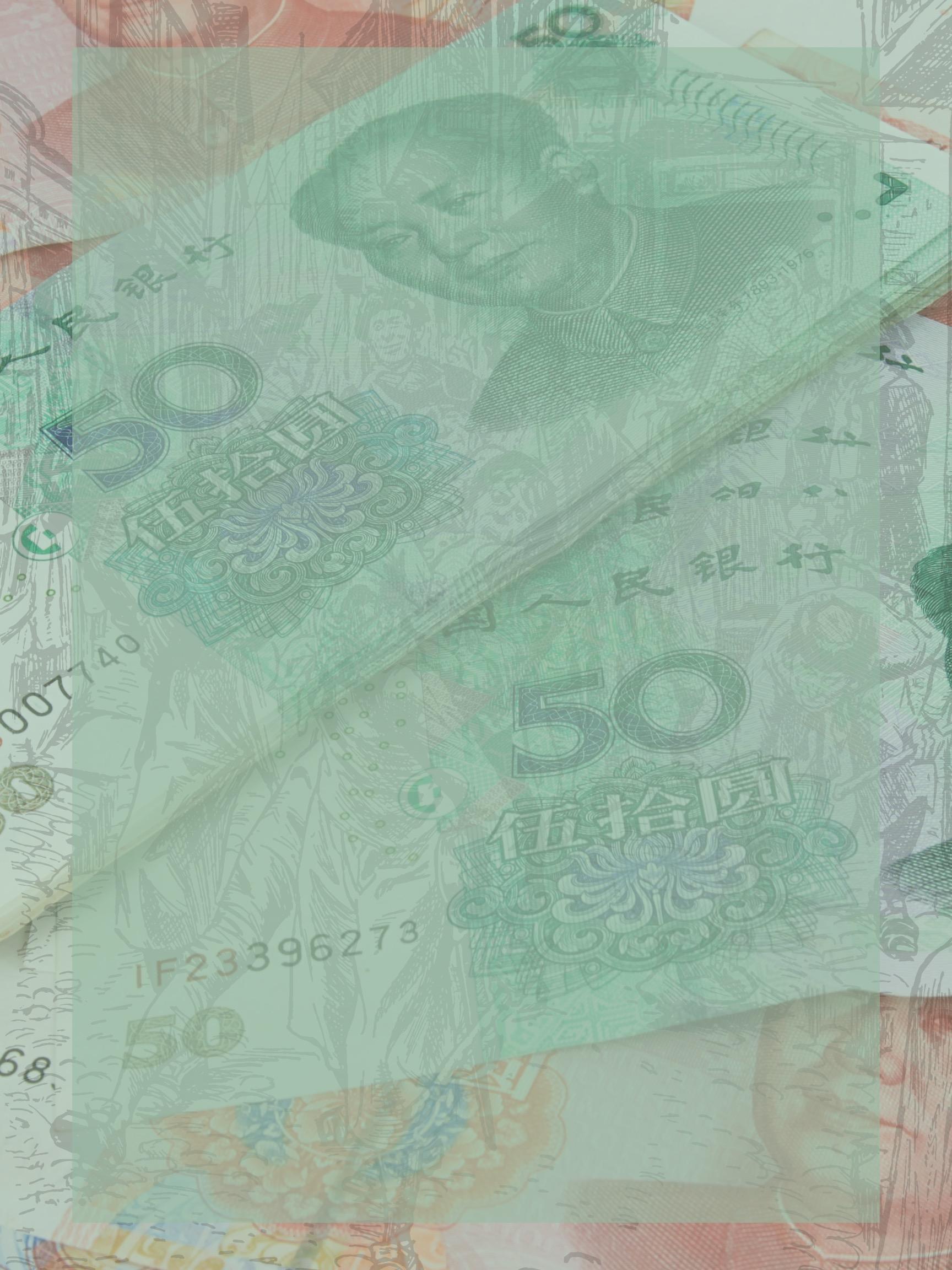
149

This made China an independent industrial nation which eventually secured its Geopolitical positioning as a nation capable of taking its own political stances and positions.
The last benefit of the Devaluation of the Chinese Yuan was attracting international customers looking for low-cost manufacturers whose supply chains now depend on China and the Chinese industries. Once in business, that meant locking those international overseas economies into the Chinese industry. Finally, when that was accomplished, this secured China's position as being untouchable unless you want to harm your own supply chains, economy and jobs.
The Devaluation of the Chinese Yuan was a risky move, but it has paid off handsomely for China. They are now the world's second largest economy and are well on their way to becoming the largest. There is no doubt that China is a force to be reckoned with, and their currency devaluation is one of the main reasons why.
If you want to learn more about the Devaluation of the Chinese Yuan and how it has helped to make China an economic powerhouse you can listen to my brief answer when I was asked “How can the US close the Manufacturing Gap with China?” at the Global Manufacturing & Industrialization Summit held in Pittsburgh.

151
OMARM.ALMAHMOUD


A few years back, in a closed room sat a German delegation, and opposite to them sat a high-level UAE delegation. The Germans were promoting their solar technology and convincing the UAE side, which is an OPEC member, to shift to more sustainable power sources such as solar. The proposal was not feasible for the UAE side as the price was too costly in contrast to the power output being produced by the German solar technology. In short, it was not worth it. The German side was frustrated with this outcome and concluded the meeting with a question to their counterparts " What will the UAE do once it runs out of oil?"
The UAE side simply said by that time solar technology would be so advanced and efficient that we will export the solar generated power to Europe!
Could Solar Energy Technology Advance To The Point Of Exporting It?
The idea of exporting energy is not a new one, in fact, countries have been doing it for years now. But what if the source of that energy was not oil or gas, but instead solar power? With rapid advancements in solar energy technology, this could become a reality sooner than we think. Let's explore the potential of this idea further.

Recent advancements in solar panel efficiency and storage capacity have made it possible for households and businesses to generate their own electricity using photovoltaic cells PV systems. These systems can either be connected to the grid, providing power back to the grid when there is excess, or they can be completely offgrid. And with the plummeting cost of solar panels and batteries, more and more people are choosing to go solar.
According to a report by the International Renewable Energy Agency (IRENA), the cost of generating electricity from PV systems has
fallen by 73% since 2010, while the cost of battery storage has fallen by 87% over the same period. These declining costs are making renewable energy sources such as solar increasingly competitive with traditional fossil fuels. In fact, IRENA expects renewables to make up nearly 80% of the world's power mix by 2050.
However, as promising as these advancements are, there are still some challenges that need to be addressed before solar can become a major player in the global energy market. For example, current storage technologies are not yet able to meet the

155
Barrels per day (bpd), down from a peak of 3.5 million bpd in 2008. Given that the average daily global oil demand is currently around 90 million bpd, it's clear that the UAE can no longer rely on oil only as its main revenue.
However, the country does have another natural resource that could potentially pick up the slack: sunshine. The UAE experiences an average of 300 sunny days per year, making it an ideal location for solar power generation. In recent years, solar power capacity in the country has grown rapidly, reaching 4 GW by 2019. And with continued investment, this figure is expected to increase to 10 GW by 2030.
The country has been a leader in the development of renewable energy, and this latest move is further evidence of that commitment. The country has already installed over 2 gigawatts of solar capacity, and that number is expected to increase in the coming years. The majority of the country’s solar power is generated in the Al Dhafra region, which is home to the world’s largest Concentrated Solar Power plant.
The hypothetical plan to export solar energy is still in its early stages, but it has the potential to be a gamechanger for the global energy market. If successful, it would lower carbon emissions and

demands of a 24/7 power supply. This means that backup power sources would still be required even if solar were to provide 100% of a country's electricity needs. Furthermore, increasing the share of renewables in the power mix would require a significant investment in grid upgrades and expansion.

Despite these challenges, I believe that with continued research and development, solar energy will play a major role in meeting our future energy needs. After all, sunlight is one of our most abundant resources, and harnessing its power could help us achieve a truly

OPEC OPEC OPEC
sustainable future. Could solar become the world's leading energy source?
The post-oil future: Solar energy export?

The UAE has long been synonymous with oil. For decades, black gold has been the driving force behind the country's economy, accounting for around a third of its GDP. But with the depletion of its oil reserves rapidly approaching, the country is now looking to diversify its economy and solar energy export is one possibility that's being considered. The dwindling of global oil reserves was apparent
even before the pandemic hit.
In 2019, Abu Dhabi the emirate with the lion's share of the country's oil reserves— produced 2 million barrels per day (bpd), down from a peak of 3.5 million bpd in 2008. Given that the average daily global oil demand is currently around 90 million bpd, it's clear that the UAE can no longer rely on oil only as its main revenue.
However, the country does have another natural resource that could potentially pick up the slack: sunshine. The UAE experiences an average of 300 sunny days per year, making it an ideal location for solar power generation.
OSEC
OSEC OSEC
In recent years, solar power capacity in the country has grown rapidly, reaching 4 GW by 2019. And with continued investment, this figure is expected to increase to 10 GW by 2030.

The country has been a leader in the development of renewable energy, and this latest move is further evidence of that commitment. The country has already installed over 2 gigawatts of solar capacity, and that number is expected to increase in the coming years. The majority of the country’s solar power is generated in the Al Dhafra region, which is home to the world’s largest Concentrated Solar Power plant.
The hypothetical plan to export solar energy is still in its early stages, but it has the potential to be a gamechanger for the global energy market. If successful, it would lower carbon emissions and speed up the transition to a low-carbon economy. It could also provide another muchneeded boost to the economy. Only time will tell if the plan comes to fruition, but it is certainly a blueprint of an ambitious and exciting project. So, could solar power eventually replace oil as the UAE's primary export? It's certainly possible. The country has already taken steps to position itself as a leading player in the global solar energy market,
159
THE SOLAR PARK DUBAI





hosting international conferences and exhibitions on renewable energy and establishing itself as a hub for solar technology innovation and research. And with many countries around the world looking to reduce their dependence on fossil fuels, there could be a significant demand for solar -produced energy in the years ahead.
OSEC – Organization of the Solar Exporting Countries?
The future holds many possibilities, and it is impossible to say definitively whether or not a group called the Organization of the Solar Exporting Countries (OSEC) will exist in the near future.
However, based on the current trends in solar energy production, it seems likely that such a group could form within the next few years. This would be a positive development for both the environment and the global economy, as increased cooperation among solarproducing countries would lead to greater innovation and progress in this important field.
The fate of oil prices in the next few years is contingent on many factors, but perhaps one of the most important will be whether or not a solar OPEC-like organization comes to fruition.

While it may seem farfetched, stranger things have happened in the world of politics and economics. If you're involved in the energy sector, it's worth keeping an eye on this potential development.
OMAR’S KEY TAKEAWAYS
• The idea of exporting energy is not new, with countries having been doing it for years.
• Advances in solar panel efficiency and storage capacity have made it possible for households and businesses to generate their own electricity using PV systems.
• The cost of generating electricity from PV systems has fallen significantly in recent years, making solar increasingly competitive with traditional fossil fuels.
• However, there are still some challenges that need to be addressed before solar can become a major player in the global energy market, such as the lack of 24/7 production.
• Solar energy export is one possibility that's being considered, as the UAE experiences an average of 300 sunny days per year.

165
•
The country has already taken steps to position itself as a leading player in the global solar energy market and could form part of a solar OPEC-like organization in the future.

• It is impossible to say definitively whether or not a group called the Organization of the Solar Exporting Countries (OSEC) will exist in the future but based on current trends; it seems likely that such a group could form within the next few years.
• The fate of oil prices in the next few years is contingent on many factors, but perhaps one of the most important will be whether or not a solar OPEC-like organization comes to fruition based on advancement of solar technologies.



OMAR M. ALMAHMOUD
is the Chief Executive Officer of the ICT Fund, a federal development fund launched by the UAE’s Telecommunications & Digital Government Regulatory Authority with the purpose of catalyzing the ICT sector in the UAE through investments in education, R&D, incubation and national technology initiatives.
The ICT Fund is the investor behind the UAE’s Astronauts Program, the Mars 2117 Initiative, The Emirates Lunar Mission, the Smart Government Initiative, the Mohammed bin Rashid Smart Learning Program, the Drones & Robotics
for Good Awards, the National Center for Space Technologies & Sciences and the Emirates

BT Innovation Center in addition to many other bold initiatives. The ICT Fund has a determined mission to provide strategic, targeted funding to empower and develop innovation and build a knowledge-based economy for the UAE.
One of the youngest leaders in the UAE's public sector, technology, investments and entrepreneurship. Degree in communications engineering from Khalifa University for Science, Technology and Research and stems from an entrepreneurial background with deep technical expertise.
169

The Bahrain National Space Science Agency (NSSA) was established by a Royal Decree, with his Majesty’s vision “To promote Bahrain to a position of international prominence in the field of space science for the purpose of achieving comprehensive and sustainable development”.
NSSA’s focus is on harnessing space technologies for national development, promote space science and applications, develop advanced space research programs, ensure capacity building and create a new space sector in the Kingdom.

THE EYE! WHAT MEETS IT’S MORE THAN

ThePowerOf Three-dimensionalThinking!
DR. MOHAMED E. AL-ASEERI CHIEF EXECUTIVE OFFICER NATIONAL SPACE SCIENCE AGENCY KINGDOM OF BAHRAIN



DR. MOHAMED E. AL-ASEERI CHIEF EXECUTIVE

OFFICER
National Space Science Agency Kingdom of Bahrain

Since its inception in 2014, the National Space Science Agency (NSSA) has endeavoured to fulfill the provisions of the Royal Decree establishing it.
To this end, it is guided by the Royal Vision to create its mission and to set its objectives.
The NSSA is determined to patiently and confidently overcome challenges and move forward through optimistic phases, regardless of the immense and significant mission. The NSSA has assumed responsibility for achieving its objectives and for realizing great hopes and major dreams.
The ultimate purpose is to place the Kingdom of Bahrain among countries playing an active role in space activities who are foremost in utilizing space diversified applications to enhance comprehensive development and ensure prosperity and well being.
Impact of 3D Printing on Space Missions
 By: Dr Mohamed Ebrahim Al-Aseeri CEO of the National Space Science Agency, Kingdom of Bahrain
By: Dr Mohamed Ebrahim Al-Aseeri CEO of the National Space Science Agency, Kingdom of Bahrain
Man's ambitions to explore space has increased in recent decades, and his strategies were based on the establishment of human settlements on the moon and then on Mars, as a second phase. Moreover, some recent strategies include lunar mining. These human aspirations are legitimate, and it would open the way for further innovations and development that support life on Earth. Nevertheless, such human settlement projects will require a sustainable supply of different needs,
starting from supply of oxygen, water, food, to the equipment, parts, and fuels, which may continue for decades. This will require huge budgets and a variety of facilities that rely on complex operations. The major space agencies, led by NASA, have started preparing for this stage and its requirements years ago, and dozens of innovations have been registered that serve the goal of colonizing the lunar and Mars. One of the most prominent of these innovations that have been successfully tested in the space environment for several times was the 3D printing technology.
NASA has been using 3D printing technologies to produce and support spacecraft that can be used in space.
With a long history of successful missions, this technology is being used in many ways. This article tries to provide an overview of 3D technology and its current uses in space research. We also discuss how these efforts could eventually benefit human exploration at a planetary scale as well as improve on some of the most fundamental design principles needed for human-made vehicles to survive harsher environments elsewhere in the solar system or universe.

NASA's use of 3D printing to produce hardware for spacecraft and materials for deep space missions is best known for their robotic rovers, but since 2013 NASA has been using 3D printing technology to support many of their Mars missions.
In 2013, NASA successfully 3D printed a prototype device that allowed the Curiosity rover to drill into rock samples from Mars. In 2014, they further improved this with a fullscale version of this device known as SCARACE (Sample Collection and Handling for Mineral Analysis by Neutron Activation). This full-scale device can be used in future missions to reach deeper levels in Martian rocks. These devices are on the International Space Station today and will be launched on future Martian surface missions.
In addition to the use of 3D printing in missions on Mars itself, NASA is also using 3D printing in missions around Jupiter's moon, Europa.
177
They have used 3D printers to print a thermal protection shield for the Europa Clipper mission. This shield will be able to withstand the dangers of Jupiter's radiation and its extremely cold temperature. It will also be used to break
through ice in order to land on Europa's surface for scientific research that could potentially discover evidence of a sub-surface water ocean. 3D printing has been used for years as a way to produce tools and supplies needed for space

travel, including spare components and tools to aid astronauts during pre-mission, in-mission, and postmission tasks. But 3D printing has also been used as a tool to develop hardware that is crucial to the success of these future
missions. With the possibility of human travel to the Moon, Mars, Europa and beyond, we could see the need for 3D printing become more prevalent for producing tools and supplies for space travel.

179
3D printing technology can allow us to better design spacecraft that are lighter and more compact. Production costs can be reduced by building complicated devices from simpler parts created from selfreinforced polymers
that don't require support structures during mission events.
Nowadays, 3D printing technology, which resulted mainly from space research, plays a major role in different business sectors on Earth. This is just an example of the importance of space technologies on human life. Thus, the investment in space science and technologies should continue for the benefit of mankind.

ü

THE KINGDOM OF BAHRAIN
An Island country in the Persian Gulf
The island state is situated east of Saudi Arabia and north of Qatar. The archipelago consists of the main island Al Bahrayn and some smaller islands and islets. The King Fahd Causeway, a series of bridges and causeways, connects Bahrain with the Arabian Peninsula. The kingdom shares maritime borders with Iran, Qatar, and Saudi Arabia.
ü The small island nation covers an area of 780 km², making it slightly larger than
Singapore (699 km²), or 3.5 times the size of Washington, DC.
ü The country is in the petroleum and aluminum business and practices Islamic banking. It is also an International Banking Center.
ü Bahrain is a member of the League of Arab States.
ü The U.S. maintains two US Military Bases in Bahrain.
ü Ruled by the House of Khalifa since the 18th century.
181


SPACE POLICY OF THE KINGDOM OF BAHRAIN IS DIVIDED INTO THREE MAIN SECTIONS: 3 GOVERNANCE: Evaluation of the role of the NSSA and other Stakeholders in applying this policy measuring the level of implementation. 2 REQUIREMENTS: The basic success factors required to accomplish the objectives of this policy. 1 OBJECTIVES: The Kingdoms’ objectives and aspirations related to space utilization and its sciences.
THE

SPACE
STABILITY
SPACE
SPACE
SPACE
ACHIEVE PRESENCE IN
CONTRIBUTE TO THE
& SAFETY OF THE
ENVIRONMENT AND SUSTAINABILITY CREATE A
SECTOR ATTAIN LEADERSHIP FOR THE KINGDOM IN THE FIELD OF
BENEFIT FROM SPACE AND ITS SCIENCES TO SUPPORT DEVELOPMENT
The X-59 Quiet SuperSonic Technology, or QueSST, experimental aircraft is approximately 100 feet long and is designed to fly at Mach 1.4 (925 mph). The aircraft is a part of the Low-Boom Flight Demonstration mission, which has two goals: 1) design and build NASA's X-59 QueSST research aircraft with technology that reduces the loudness of a sonic boom to a gentle thump to people on the ground; and 2) fly the X59 over select U.S. communities to gather data on human responses to the sound generated during supersonic flight and deliver that data set to U.S. and international regulators.

Description •Author/Origin: NASA Aeronautics Research Mission Directorate, Liam Brinton •Relevant Mission: Quesst •Date Added: September 15, 2022 •Keywords: Spacecraft, X-planes, experimental aircraft NASA 3D RESOURCES https://nasa3d.arc.nasa.gov/detail/x-59-multi-piece
https://nasa3d.arc.nasa.gov/detail/x-59-multi-piece
Disclaimer: 3D Printing

We understand that 3D printing often involves trial and error. If you have to make adjustments or changes when printing these models, please share your experience with us: arc-special-proj@lists.nasa.gov 185

DR. MOHAMED E. AL-ASEERI
brings a wealth of extensive academic and professional experience to NSSA. He holds a P.h.D in Reactors Design from the University of Florida, USA. He also holds a Master’s degree in Reactors Design from the University of Florida, a Master’s degree in Bioreactors from the University of Manchester, and an equivalent certificate to Master’s degree in Academic Practice from the University of York St. John (UK), in addition to holding a Bachelor’s degree in Chemical Engineering from the University of Bahrain.
Dr. Al-Aseeri had worked as a Chief Executive Officer for Bahrain Polytechnic, Director of the Accreditation and Licensing Directorate under the Higher Education Council, Director of the Educational Resources and Techniques Directorate at the Ministry of Education, Project Director of the King Hamad Library, and Director of the Technical and Vocational
Education Directorate at the Ministry of Education.
He also served as Assistant Professor of Chemical Engineering at the University.
He represented the Kingdom of Bahrain in the GCC team for the exploitation of atomic energy in the production of electricity and desalination.

187

The Web 3.O Economy
The world is clearly changing and it’s happening now, in front of us. While writing this report, I feel that the information I am at disposal to produce is already outdated.
This is because of the technological and innovation curve is exponential, which means that the more we advance the faster we progress. It’s nice to know that this behavior is happening after the 1st Industrial Revolution in Europe, before was pretty much “linear” (given the Middle-Age cultural fall).
 Giorgio Torre
Giorgio Torre
AS FOR THE INNOVATION STAGE

we are now experiencing a real change of paradigm, where technology determines the rise of human and philosophical questions and debates. What today is changing is an immersive and fluid interaction with the machine (hardware) and its content (software). Users will, in the future, “approach” to the machine rather than “use.” In the current plethora of trends, polluted by the market hype (useful for an old brand that leverages it for marketing
purposes), we need today more than ever solid and smart regulations, which can indicate to regulators and policy makers opportunities and constraints. But before that, regulators and policymakers need first to have some basic knowledge about the matter. The purpose of this document is exactly to provide this basic understanding, before pointing out to strategic objectives and potential roadmaps.
OLD WORLD, NEW WORLD, HYBRID WORLD

for
BLOCKCHAIN AS DECENTRALIZED DATABASE

Custody
Governance
TRADITIONAL DATABASE BLOCKCHAIN
Centralized data stores are trusted to keep information without tampering with it.
Big Tech organizations are governed by conventional corporate governance structures.
Identify
Independent credentials are maintained on each platform. Big Tech credentials are interoperable to a certain extent.
Decentralized storage in the form of an immutable ledger makes data tampering much more difficult.
Decentralized governance options can allow communities of users to govern tech organizations.
Decentralized identities are maintained on the blockchain and accessed via a private key, and identities accumulate third-party attestations.
Interoperability
Non-interoperable data structures are stored by each individual consumerfacing and business -facing enterprise.
Privacy
Tech companies hold massive amounts of users’ data. Data is used to increase the profitability of the companies’ business, not necessarily for the consumer’s benefit.
Profitability
Highly profitable centralized companies reap rewards of their control of the consumer Internet; considerable inroads into enterprise Internet as well.
Public blockchain provides a template for interoperable data structures.
Information is viewable to everyone unless it is encrypted and made visible to specific stakeholders. The data custodians do not have special visibility into the data.
Tokens distributed to diffuse suppliers in payment for services; network itself has limited capitalization.


COMPONENTS OF THE INTERNET 3.0
The Internet 3.0 has effect on several areas of innovation and multiple capabilities. More specifically, Web3 can be schematized as the aggregation of pre-existing entities and technologies that are combined as follows:

• Blockchain: decentralized, trustless and p2p network that stores all the information of the chain, consisting in transactions between users on the ledger.
• UI/UX 3.0: it represents the new way of engaging users and to enhance remote collaboration, in other words can be called Metaverse.
• AI & Big Data: Semantic web and NLP will heavily contribute to make the interaction between user and machine more “human”.













WEBSITE WEB 3 UI/UX 3.0 BLOCK CHAIN AI & BIG DATA 195
THE WEB3 EQUATION

e
WHY WEB3 MATTERS

People will have more control over their data and they can monetize them by selling directly to the end-consumers.
Web3 Social Media could allow users to monetize their own data, or even earn crypto “tips” from other users for posting interesting content.
As Web3 runs on blockchain, user information remains more safe and secure than it would be in the centralized architecture.
Web3 empowers user with ownership. It’s about the direct connection between creators and consumers, obfuscating the gatekeepers.
Web3 will use artificial intelligence (AI), machine learning(ML), and the semantic web. Web3 paves the way for a future in which different people and machines can interact with data, value, and other counterparties without the involvement of third parties.

197
THE EVOLUTION OF THE WEB TECH STACK


DECENTRALIZED APPLICATIONS (DAPPS)
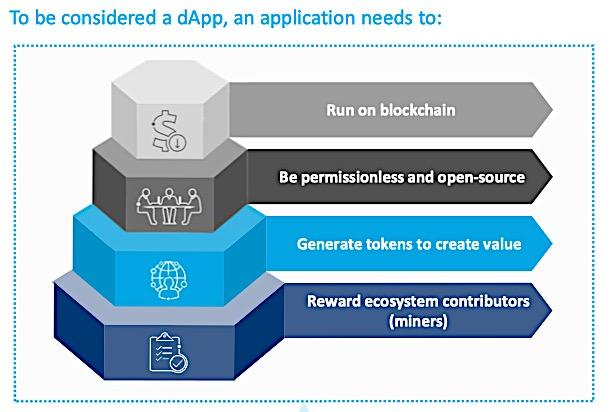
Any Mobile or Web Application, being part of the Web3 ecosystem is defined dApp (Decentralized Application). Dapps are Applications that operate autonomously, typically through the use of smart contracts, that runs on a decentralized blockchain system. As such, DApps are not owned by a single user, rather they distribute tokens, both fungible and nonfungible (NFTs), that represent ownership.



199
WEB3 STACK LAYERS


The Internet 3.0 capabilities have started, among other things, to empower users and content creators. This has been possible thanks to the to the way the web3 architecture (tech stack) is designed.
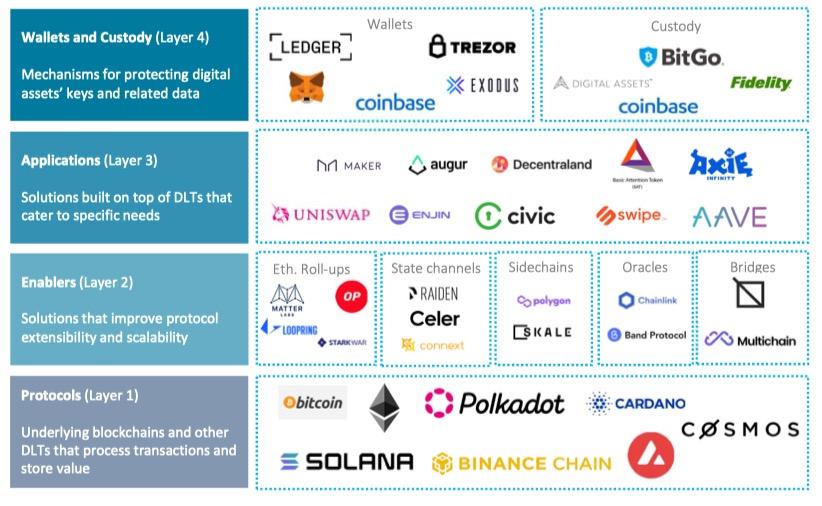
WEREN’T THESE FEATURES ALREADY IN WEB2?

Web3 is not a sudden disruption, but rather a long and ongoing process that will completely revolutionize the way we use and approach to Internet. More specifically, Web3 is a process made of progressive integration of disruptive technologies, all combined to provide users with the highest personalized and enjoyable experience. In other words, Web3 is the destination, not the path.

SHIFTING FROM WEB2 TO WEB3

Web 2.0 refers to websites and applications that utilize usergenerated content for end users. Web 2.0 is used in many websites today, chiefly focusing on user interactivity and collaboration. Web 2.0 also focused on providing more universal network connectivity and communication channels. The difference between Web 2.0 and 3.0 is that Web 3.0 is more

WHAT IS WEB3 ALL ABOUT

focused on the use of technologies like machine learning and AI to provide relevant content for each user instead of just the content other end users have provided. Web 2.0 essentially allows users to contribute and sometimes collaborate on site content, while Web 3.0 will most likely turn these jobs over to the semantic web and AI technologies.
Among other things, the Internet 3.0 will shape 4 main areas of “innovation”:
• Identity: where the users is in controls of his own data and can decide whether to keep them secret or to monetize them. In the web3, each users connects his own
decentralized wallet to the browser, where identity and crypto assets are stored. A public key identities a unique address (utilized for the transactions or change ownerships), while a private key represents the secret code to authorize transactions. Made easy, the public key is like the IBAN and the private key is the CVV.
• Value: Tokenomics and tokenization of illiquid assets will generate a value that will first be purely digital and, after a wider adoption, will become part of the real world asset intrinsic value.
203
• Governance: Though the Decentralized Autonomous Organization model, web3 enterprises’ governance will be dictated by voting sessions, whose participants have voting rights proportional to their entry capital.

• Ownership: Being complementary to the
identity, ownership will be granted by specific non fungible tokens (NFTs), allowing to map each (onchain represented or native) digital assets to a specific owner, except for the fractionalization case.

THE CHANGE OF PARADIGM OF THE INTERNET 3.0



205
BREAKDOWN OF THE WEB3 EQUATION


WEB3: A NEW FORM OF COLLABORATIVE ECONOMY

The Economy 3.0 is driven by four elements throughout the value chain. There are: (1) The native token, described as as the digital liquidity, (2) The asset being traded –,
e.g., a container of oranges (3) The on-chain representation of the physical world asset, (4) Decentralized identity (for either reputation of KYC compliance).

COLLABORATIVE ECONOMY: THE BUSINESS MODEL OF WEB3

In the context of the collaborative internet, one can identify (3) three main components:
• Economy. Incentives-based, to drive the collaboration. The governing organization of the DAO rewards specific users (i.e. content creators or contributors) by minting and allocating tokens to compensate them, based on the value they're adding to the network (community). This boosts the network democratization and drives collaborative win-win outcomes.
• Governance model. The DAO’s native token is linked to a voting token. Through the DAO participants can provide their vote as they were board members of a company.
• Commercial model. It merely consists in setting the services fees and establishing competition among service providers driving the platform and the apps.
At the centre of these three components there is the digital liquidity.




Digital Liquidity ECONOMY Incentive GOVERNANCE DAO Voting COMMERCE Fees, Competition, cooperation How Incentives, Disincentives and Behavior work How decisions are Made (through voting) on-chain and off-chain How monetization and fees work DEMOCRATIZATION FUNDING AND DECISION MAKING MONETIZATION
FINANCIAL SERVICES ECOSYSTEM IN THE WEB3


BLOCKCHAIN. A form of distributed ledger in which details of transactions are held in the ledger in the form of blocks of information. A block of new information is attached into the chain of pre-existing blocks via a computerized process by which transactions are validated.

CRYPTO-ASSET. A digital asset (issued by the private sector) that depends primarily on cryptography and distributed ledger or similar technology. Crypto-assets include, but are not limited to, a crypto-asset that is classified as a payment instrument in a jurisdiction and a crypto-asset that is classified as a security in a jurisdiction.
CRYPTO-ASSET ECOSYSTEM.
The entire ecosystem that encompasses all crypto-asset activities, market and participants.
CRYPTO-ASSET INTERMEDIARY. One kind of crypto-asset service provider that performs intermediation functions on a range of economic functions including depositing, saving, borrowing, lending, trading or investment of crypto-assets.
CRYPTO-ASSET ISSUER . An entity, person, or other structure that creates new crypto-assets.
CRYPTO-ASSET MARKET. Any place or system that provides buyers and sellers the means to trade cryptoassets and the associated instruments, including lending, structured investment products, and derivatives. Crypto-asset markets facilitate the interaction between those who wish to offer and sell and those who wish to invest.
211
CRYPTO-ASSET SERVICES.
Services relating to cryptoassets that may include, but are not limited to, distribution, placement, facilitating exchange between crypto-assets or against fiat currencies, custody, provisioning of noncustodial wallets, facilitating cryptoasset trading, borrowing or lending, and acting as a broker-dealer or investment adviser.
CRYPTO-ASSET SERVICE PROVIDERS. Individuals and entities that conduct the provision of crypto-asset services, including crypto asset intermediaries such as crypto-asset trading/lending platforms and wallet providers, among others.
CRYPTO-ASSET ACTIVITIES.
Activities serviced by a cryptoasset issuer or crypto-asset service provider.

CRYPTO-ASSET TRADING
PLATFORM. Any platform where crypto-assets can be bought and sold, regardless of the platform’s legal status.
DECENTRALISED FINANCE
(DeFi). A set of alternative financial markets, products and systems that operate using crypto-assets and ‘smart contracts’ (software) built using distributed ledger or similar technology DeFi protocols, a specialized autonomous system of rules that creates a program designed to perform financial functions.
GLOBAL STABLECOIN
(GSC). A stablecoin with a potential reach and use across multiple jurisdictions and which could become systemically important in and across one or many jurisdictions, including as a means of making payments and/or store of value.
PROJECT DEVELOPERS
.
Individuals/entities that develop protocols or other essential building blocks of the technological infrastructure to issue a crypto-asset, launch a distributed ledger or distributed ledger -based application, or function as a crypto-asset service provider .
SMART CONTRACT. Code deployed in a distributed ledger technology environment that is self-executing and can be used to automate the performance of agreements between entities. The execution of a smart contract is triggered when that smart contract is “called” by a transaction on the blockchain. If triggered, the smart contract will be executed through the blockchain’s network of computers and will produce a change in the blockchain’s “state” (for example, ownership of a cryptoasset will transfer between market participants).

STABLECOIN.
A crypto-asset that aims to maintain a stable value relative to a specified asset, or a pool or basket of assets,
WALLET.
An application or device for storing the cryptographic keys providing access to cryptoassets. A hot wallet is connected to the internet and usually takes the form of software for the user, while a cold wallet is hardware that is not connected to the internet and stores the cryptographic keys.
NON-CUSTODIAL WALLET.
Software or hardware that stores cryptographic keys for a user, making the user’s cryptoassets accessible only to the user and allowing the user to interact directly with the blockchain and the blockchainbased finance applications. A noncustodial wallet is also known as an “un-hosted wallet.”

GIORGIO TORRE
has 10+

years of successful hands-on international experience in Project Management, Business Making and Consulting. During his activity he has been mentoring GCC Governments on their national startup ecosystem development across several industries, while helping the ecosystem to be fueled by the introduction and promotion of emerging technologies.
Giorgio is an internationally recognized and awarded public speaker, with a focus Cybersecurity, Blockchain, Metaverse, Web 3.0, Data Science topics and author of 50+ International publications on AI, Blockchain, Metaverse and Web3.
215


217
TECHNOLOGY IN THE MAKING VECTOR N360 ™ © INNER SANCTUM
 Linda Restrepo | Publisher - Editor
Linda Restrepo | Publisher - Editor
TECHNOLOGY IN THE MAKING
DISCLAIMER: This Magazine is designed to provide information, entertainment and motivation to our readers. It does not render any type of political, cybersecurity, computer

programming, defense strategy, ethical, legal or any other type of professional advice. It is not intended to, neither should it be construed as a comprehensive evaluation of any topic. The content of this Presentation is the sole expression and opinion of the authors. No warranties or guarantees are expressed or implied by the authors or the Editor. Neither the authors nor the Editor are liable for any physical, psychological, emotional, financial, or commercial damages, including, but not limited to, special, incidental, consequential or other damages. You are responsible for your own choices, actions, and results
Linda Restrepo | Publisher - Editor






























































 The Development of Artificial Intelligence in the People's Republic of China (Talent creation and comparison with the United States of America)
The Development of Artificial Intelligence in the People's Republic of China (Talent creation and comparison with the United States of America)




















 Giancarlo Elia Valori Edificio Valori at Peking University
Giancarlo Elia Valori Edificio Valori at Peking University



 Alfred D. Hull Dr. Michael Klipstein Dr. Jim Kyung-Soo Liew Dr. Pablo Breuer Kristian T. Palaoro Dr. Michael Spencer Dr. Mark Grzegorzewski
Alfred D. Hull Dr. Michael Klipstein Dr. Jim Kyung-Soo Liew Dr. Pablo Breuer Kristian T. Palaoro Dr. Michael Spencer Dr. Mark Grzegorzewski












































































 By: Dr Mohamed Ebrahim Al-Aseeri CEO of the National Space Science Agency, Kingdom of Bahrain
By: Dr Mohamed Ebrahim Al-Aseeri CEO of the National Space Science Agency, Kingdom of Bahrain









 Giorgio Torre
Giorgio Torre






































 Linda Restrepo | Publisher - Editor
Linda Restrepo | Publisher - Editor